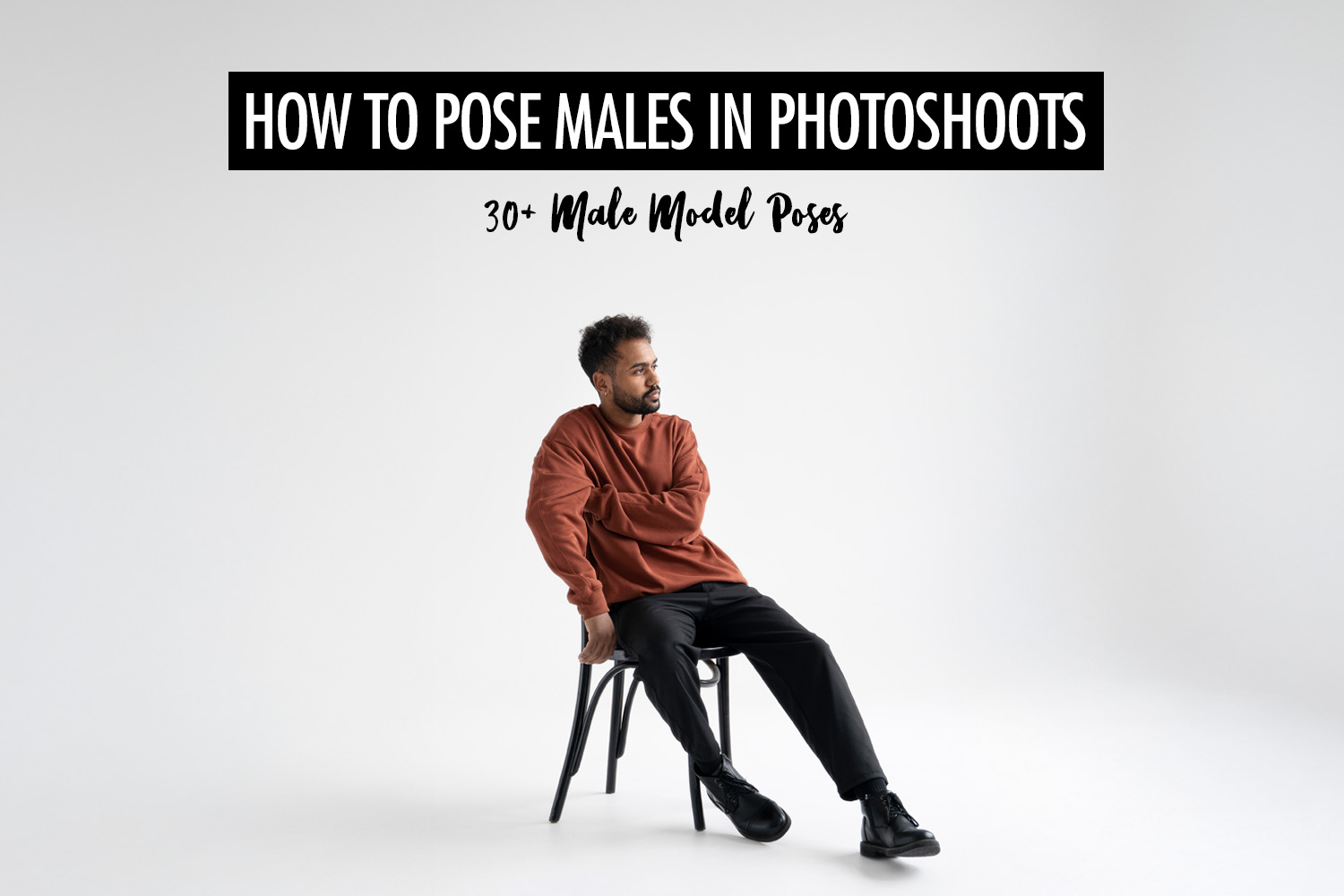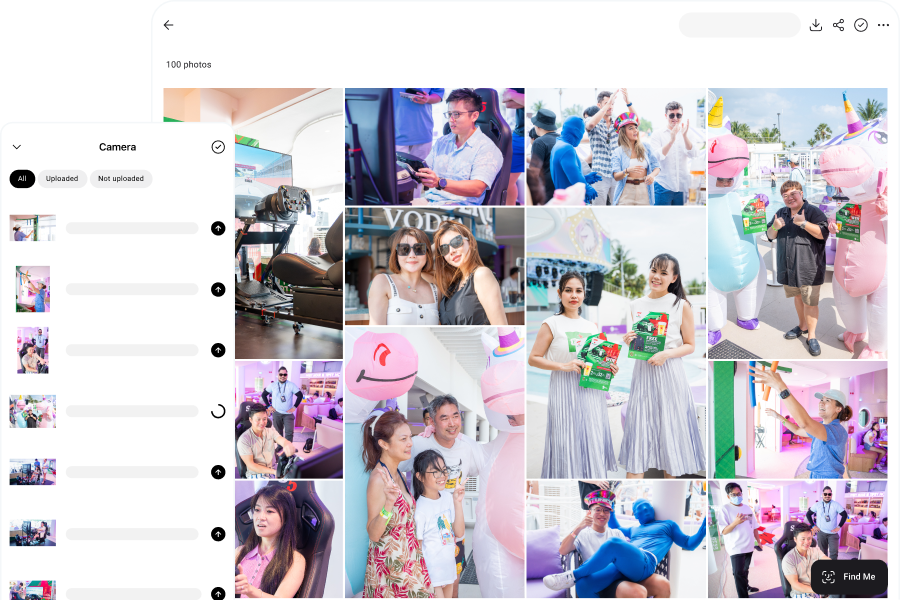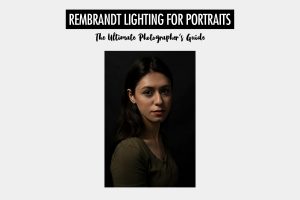Posing men can be surprisingly tricky, even for seasoned photographers. While there’s no shortage of guides on posing wedding couples, brides or female models, posing male subjects often gets overlooked or simplified into a few “classic” stances. But the reality is, men come into photoshoots with just as much variety in personality, body language, and confidence levels as anyone else. Whether you’re working with a groom, a corporate executive, a fitness client, or a camera-shy dad, knowing how to direct and pose male subjects is an essential part of producing strong, authentic portraits.
Unlike many female poses which often emphasize softness, flow, or elegance, male poses tend to focus on strength, structure, and presence. But that doesn’t mean every man should be posed the same way, with arms crossed and a serious stare. The key is in understanding masculine body language, knowing how to work with different personalities, and offering simple yet intentional guidance that helps your subject feel comfortable and look confident.
This guide is designed to help photographers of all levels build a versatile toolkit for men photoshoot poses. From standing and seated poses to working with different body types and expressions, we’ll cover practical tips you can apply whether you’re shooting a solo portrait, a groom at a wedding, or a group of groomsmen. Let’s dive in and explore how to make your male subjects look their best, without stiff or awkward results.
How Are Male Poses Different?
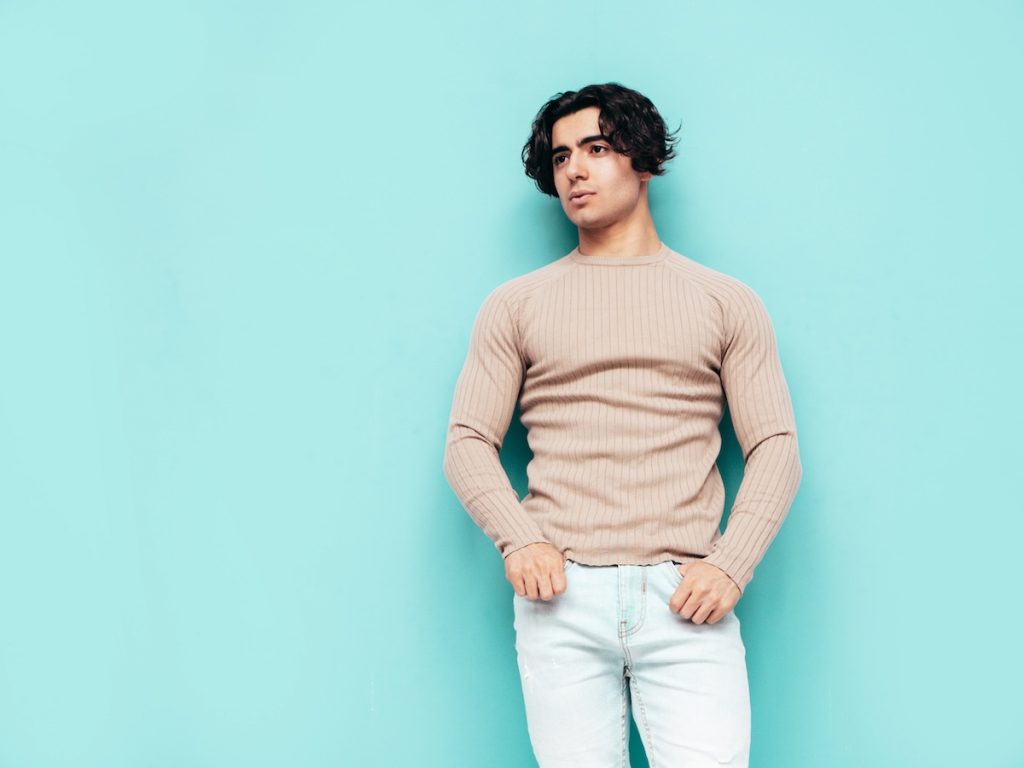
When it comes to portrait photography, posing isn’t one-size-fits-all. The techniques you use for male subjects can differ significantly from how you pose women or couples, because each subject carries a different kind of energy, body language, and visual goal. Understanding these distinctions allows you to give better direction and capture more intentional, flattering results.
Female posing often emphasizes softness, curves, and elegance. The body language tends to be more fluid, with subtle angles, relaxed hands, and poses that elongate the neck, waist, or limbs. Feminine posing works best when you play with movement and shape—whether it’s a soft gaze over the shoulder, a gentle sway in the hip, or a natural hand placement near the face. The goal is to bring out grace, beauty, and ease.
In couple posing, the priority is emotional connection. You’re guiding your subjects toward physical and emotional closeness. Interlocked hands, leaning into each other, walking shots, and candid interactions help tell a shared story. It’s not about how each person stands individually, but how they fit together in the frame. Prompts work especially well here, like “Look at each other and laugh” or “Hold them like it’s your first dance.”
By contrast, male poses often lean into strength, structure, and confidence. The emphasis is on clean lines, solid stances, and body language that feels grounded and controlled. Rather than flowing curves, you’re working with angles—square shoulders, sharp jawlines, and a balanced frame. Hands are kept purposeful (in pockets, adjusting a cuff, resting on hips), and facial expressions are often more composed or intense. Even when casual, the goal is to maintain a sense of presence.
Knowing how to adjust your direction depending on whether you’re posing a man, woman, or couple will elevate your ability to create images that feel natural, powerful, and true to your subject.
Understanding Masculine Body Language
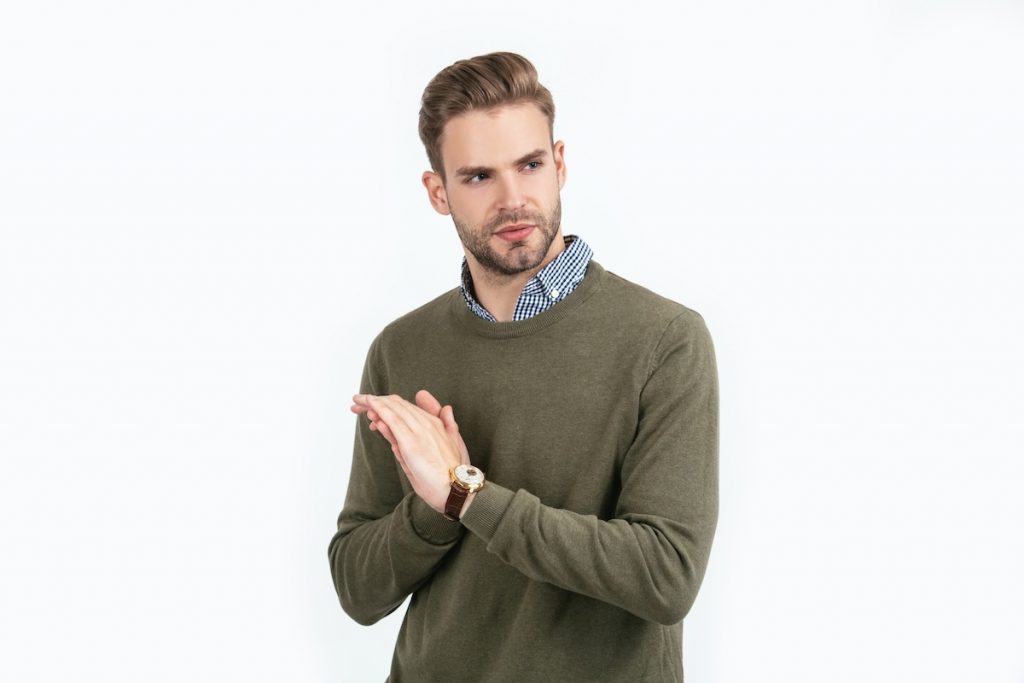
Before you start directing male poses, it helps to understand the fundamentals of masculine body language. In photography, masculinity isn’t about exaggeration. It’s about subtle cues that convey strength, composure, and self-assurance. Whether your subject is wearing a tailored suit or casual jeans, these principles apply across styles and personalities, from classic male model poses to more relaxed men photoshoot poses.
Posture is everything. A confident male model pose starts with good posture: straight spine, relaxed but squared shoulders, and a lifted chest. Slouching tends to read as unsure or passive, while upright posture gives the impression of control and presence. Encourage your subject to stand tall but stay relaxed, because tense shoulders or stiff limbs can make the pose feel forced.
Weight distribution is another key detail. In most male poses, the weight is best shifted slightly onto one leg, creating a natural bend in the opposite knee. This relaxed stance adds dimension to the body while keeping it grounded. A completely symmetrical stance can look rigid or unnatural unless you’re aiming for a formal or editorial look.
Open or closed body language also plays a role in how masculine energy is perceived. Open body language—arms slightly away from the torso, chest facing forward, hands visible—feels approachable and confident. Closed body language—crossed arms or hands tucked in pockets—can convey a more guarded or serious tone. Both are valid; it just depends on the mood you want to create.
Ultimately, posing men effectively starts with reading their body language and using subtle adjustments to elevate what’s already there. Your job as the photographer is to direct them toward a position that feels intentional, not stiff, while emphasizing the qualities that make the subject look self-assured and at ease in their own skin.
What to Do With the Hands?
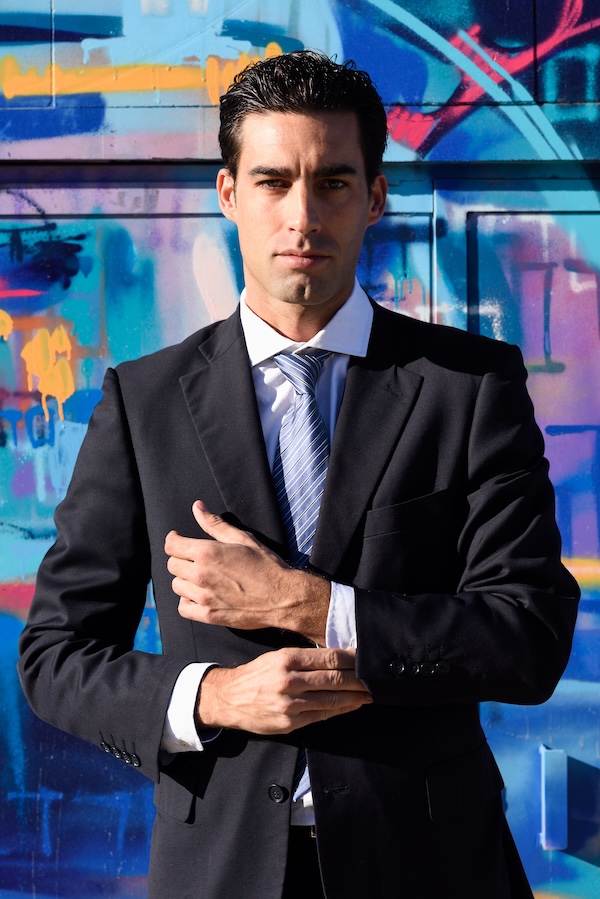
Ask any photographer what the most awkward part of posing can be, and chances are they’ll say: the hands. When left without purpose, hands tend to look stiff, limp, or lost—especially in male portraits. But once you give them something to do, they can instantly elevate the pose by adding intention, style, and realism to the shot.
One of the most reliable tricks is to use pockets. For a clean, relaxed look, have your subject place their thumbs in their pockets while the rest of the fingers rest outside. This creates natural tension in the arms and adds a bit of structure. Alternatively, placing the whole hand in the pocket gives off a more casual, laid-back vibe. Switch it up between one hand or both hands depending on the energy you’re going for.
Another classic option is crossed arms. This works especially well for more assertive or confident portraits, like corporate headshots or editorial-style shoots. Make sure the arms don’t ride too high or squeeze the torso, by keeping the forearms relaxed and visible. For added variation, have one hand grip the opposite wrist instead of a full arm cross, which can feel more approachable.
Props also offer great solutions. Encourage the subject to adjust a cufflink, touch their watch, hold sunglasses, or casually drape a jacket over their shoulder. These actions create candid-looking moments while keeping the hands busy and expressive. Even simple gestures like tugging on a lapel or clasping hands at the waist can add polish and professionalism.
Most importantly, avoid the dreaded “dangling arms” problem, when hands just hang at the sides with no intention. Idle hands not only look awkward, they also give the subject nothing to focus on. Keep your direction clear and practical: give the hands a role to play, and the entire pose will feel more grounded, stylish, and complete.
Working With Facial Expressions
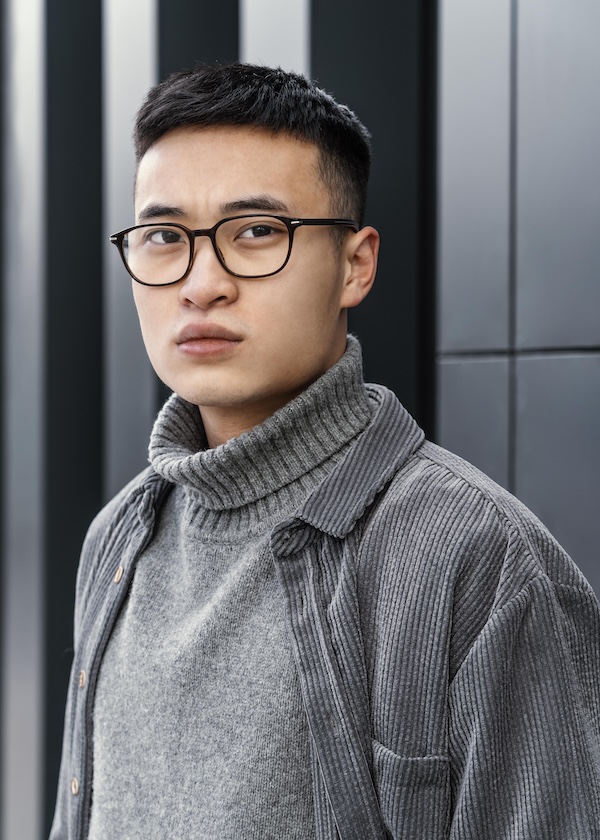
A great pose can fall flat if the facial expression doesn’t match the energy of the shot. For male portraits, facial expressions carry a lot of weight. They set the tone, hint at personality, and tie the whole image together. But getting the right look isn’t always about telling someone to “smile.” It’s about guiding subtle shifts that feel natural, confident, and intentional, especially when working through a variety of male photoshoot poses.
Start with the eyes. Eye direction can dramatically change the mood of a portrait. Looking directly into the lens creates a strong, assertive feel—it’s perfect for headshots, editorial looks, or high-impact male model poses. Looking off-camera can soften the shot or introduce a sense of thoughtfulness or mystery. If your subject is feeling a bit stiff, have them shift their eyes slightly left or right while keeping the head steady. It breaks tension and often results in a more relaxed look.
Next, focus on the jawline and chin. The classic tip—“chin slightly down, jaw slightly forward”—is especially helpful for men photoshoot poses. This position defines the jaw, avoids double-chin shadows, and makes the face appear stronger. For more serious or cinematic portraits, a subtle squint (also known as the “squinch”) adds depth and character to the eyes without looking forced.
Smiles can be tricky. Not every male subject is comfortable with a wide, toothy grin, and that’s okay. Instead, guide them through a range of expressions, from soft smiles and smirks to neutral or intense looks. Try prompts like “Think of someone who just made your day” or “Imagine you’re about to say something clever.” These often spark authentic micro-expressions that feel natural and engaging in any photoshoot scenario.
Above all, watch for tension. Furrowed brows, clenched jaws, or forced expressions can take away from an otherwise great shot. Keep the atmosphere light, give specific prompts, and be ready to capture the in-between moments when your subject forgets about the camera for a second. That’s often where the gold is.
Posing for Different Male Body Types
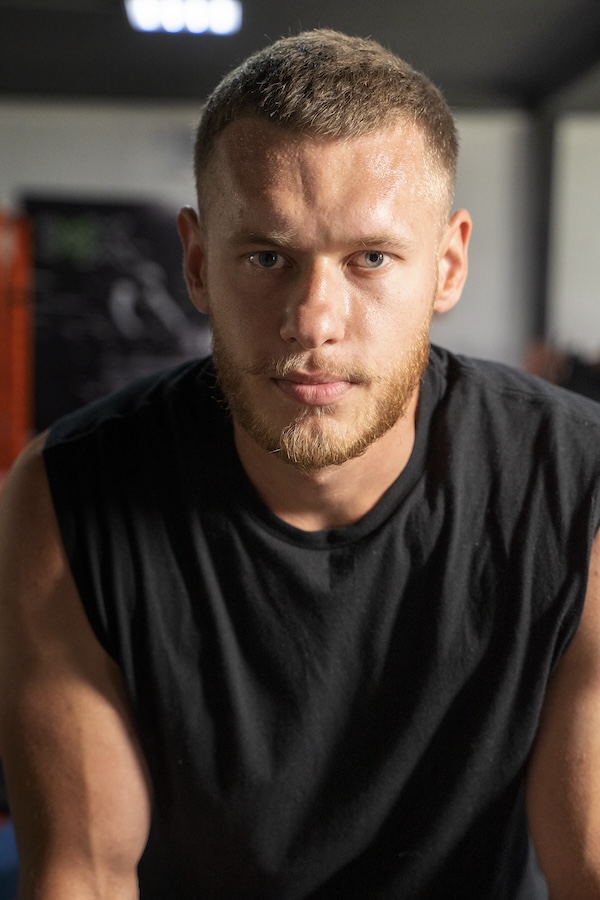
Every male subject brings a different build and presence to the frame, so your posing approach should adapt accordingly. Whether your client is tall and lean, broad and muscular, or carries a larger frame, your job as the photographer is to help them feel confident, comfortable, and authentically themselves. With a few thoughtful adjustments, you can flatter every body shape without making the male pose feel overly staged.
For larger or broader body types, focus on creating space and structure. Avoid flat-on angles that widen the frame—have your subject turn slightly to the side, shifting their weight onto the back leg to reduce the width facing the camera. Keep the arms slightly away from the body, which defines the torso better than pressing them against the sides. Leaning slightly forward from the waist (especially in seated poses) can enhance presence and minimize unwanted bulk. These techniques are especially helpful in lifestyle or male picture poses that need to feel relaxed yet polished.
With slimmer or shorter frames, your goal is to add presence and visual balance. Use squared shoulders and strong posture to create a grounded, composed look. Avoid overly wide stances or dramatic arm placements that exaggerate their build. Instead, bring the limbs closer to the body, and opt for angles that elongate—such as having them lean back slightly, or stand with one leg forward. Slight upward camera angles can also subtly enhance stature without feeling artificial, a trick often used in photoshoots.
For muscular or athletic builds, the key is restraint. While it’s tempting to show off strength with flexed poses, subtlety often photographs better. Choose men photoshoot poses that highlight natural definition without looking staged—like adjusting a cuff, placing hands on hips, or walking mid-stride. Keep the lighting directional to sculpt muscle tone, and guide expressions to feel relaxed and self-assured rather than overly intense.
No matter the body type, the goal is always the same: to help your subject look confident and feel seen. Small tweaks in angles, posture, and positioning can go a long way in capturing flattering male model poses that celebrate who they are, without relying on gimmicks or unnatural posing.
Movement and Outfits
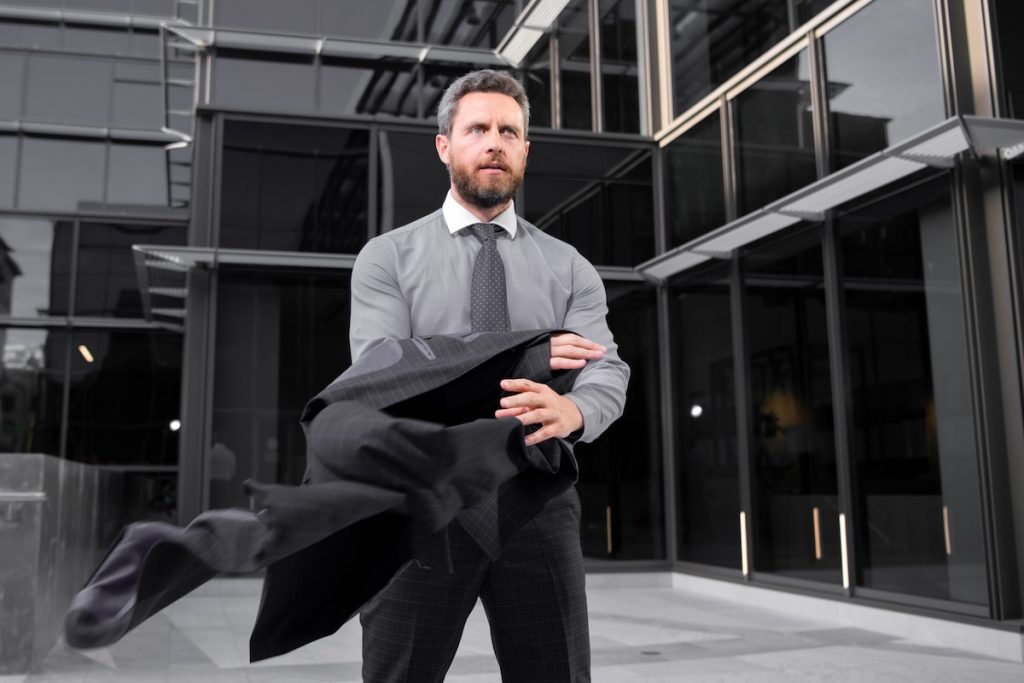
Stillness can be powerful in male portraiture. But sometimes, it’s movement that brings a photo to life. Whether subtle or dynamic, introducing action into your shoot can help your subject loosen up, avoid stiffness, and express more personality. And when combined with thoughtful wardrobe and accessory choices, movement becomes more than just a technique. It becomes part of the story you’re telling through your male poses.
Start with simple, natural movements. Have your subject walk slowly toward the camera, adjust their jacket, roll up their sleeves, or turn over their shoulder. These small gestures create flow in the frame and often lead to candid in-between shots that feel authentic. Movement also helps reduce posing fatigue, especially with subjects who aren’t used to being photographed. By keeping them physically engaged, you’re less likely to get rigid expressions or awkward hands, which is ideal for capturing relaxed male picture poses that feel genuine.
Clothing plays a big role in how movement photographs. Flowy coats, unbuttoned blazers, or untucked shirts can add motion and visual interest to a simple walk or male pose. On the flip side, a structured outfit—like a sharp suit—can amplify a subject’s presence, anchoring the image with clean lines and controlled energy. Think about how the fabric reacts to wind or motion, and use that to your advantage in your male photoshoot sessions.
Accessories can guide action, too. A subject adjusting a watch, pulling on gloves, holding sunglasses, or carrying a duffel bag immediately creates an implied story. These small, intentional actions not only give the hands something to do but also convey confidence and control. Even something as minimal as slipping a thumb into a belt loop or draping a jacket over the shoulder adds a sense of rhythm and personality to your male model poses.
The key is to avoid overly staged or exaggerated gestures. Keep your cues specific and rooted in real-world behavior. Instead of saying “act natural,” give prompts like, “Fix your cuff like you’re heading into a meeting,” or “Walk like you just spotted someone you know.” These micro-scenarios ground your subject in purpose and help them relax into believable movements.
By syncing wardrobe, accessories, and action, your portraits become more than posed. They become dynamic, stylish moments frozen in time. It’s this subtle choreography between subject and setting that often makes the difference between a good shot and a great one, and elevates even the most basic male model poses into something memorable.
Male Model Poses
In this section, you’ll find a curated set of male model poses for a variety of settings, from casual lifestyle shoots to formal studio sessions. Whether you’re working with everyday clients or seasoned models, these poses will serve as a reliable foundation to elevate your portrait work.
The Confident Lean
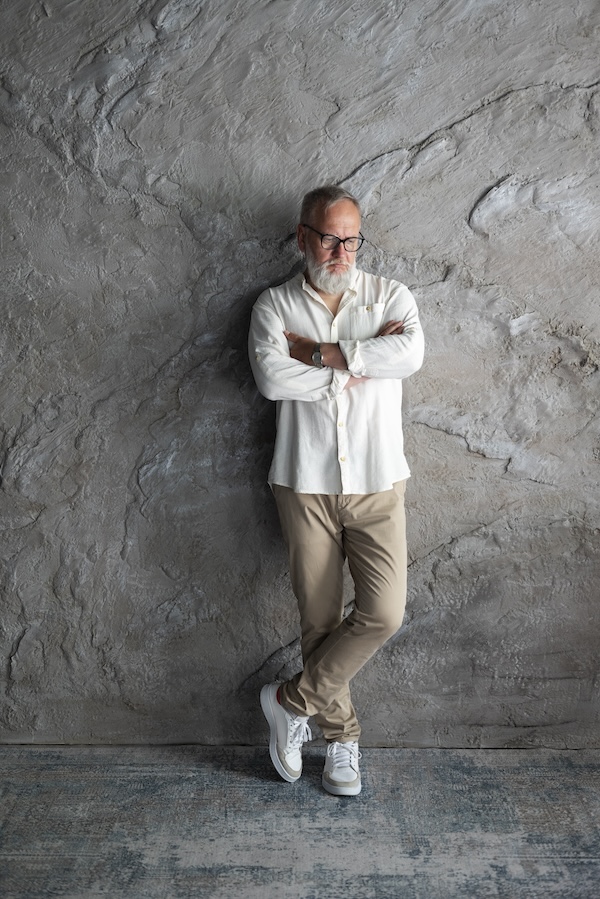
The confident lean is a versatile male model pose that works especially well in urban settings, with textured exteriors or white studio backdrops. Use directional light to sculpt soft shadows and give depth to the subject’s frame.
Have your subject stand at a slight angle to the camera, leaning one shoulder casually against the surface. One foot can rest flat while the other bends or crosses slightly in front, creating natural asymmetry. Guide them to shift their weight comfortably and imagine they’re waiting for someone they genuinely want to impress—relaxed, but with quiet confidence. Encourage a slow exhale through the nose, relaxed jaw, and focused eyes, whether looking directly at the camera or off to the side.
Once they’re settled, suggest subtle movements like slipping one hand into a pocket or adjusting a sleeve. These small adjustments not only add variety but also help the subject settle into the moment. Just watch the posture—the lean should suggest ease without slouching. An upright spine, open chest, and relaxed shoulders will create strong lines and flattering angles for most body types.
The Walking Portrait

The walking toward the camera pose adds a dynamic, cinematic feel to any male portrait session. Choose an open walkway or path with a natural leading line, like a sidewalk, corridor, tree-lined street, or a clean studio backdrop with depth. Aim for soft, even lighting or a subtle backlight to enhance atmosphere and motion.
Have your subject begin about 10 feet away, standing tall with relaxed shoulders and good posture. As they walk slowly toward the camera, encourage a calm, natural stride with a slight sway in the arms or one hand tucked into a pocket to prevent stiffness. To keep the energy authentic, prompt them to walk as if they’re headed to meet a friend—confident, but casual. Let them shift their gaze between steps: off to the side, straight ahead, and occasionally toward the lens.
Capture multiple frames as they move, focusing on the moments just before or after a step when the body looks most natural. Mix in wide shots to show the environment and closer frames to highlight expressions or fabric movement. Shooting at a slightly lower angle with a longer focal length adds weight and presence, especially effective for slimmer or more compact builds. This male model pose not only adds motion but also brings personality to the frame.
The Relaxed Seated Pose
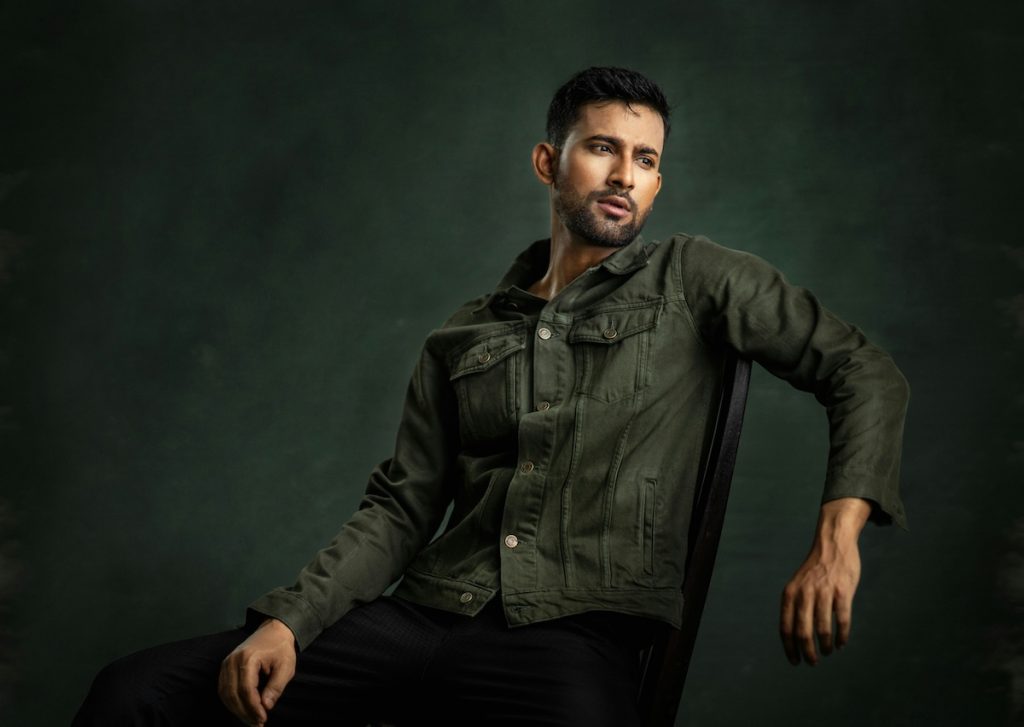
Seated male photoshoot poses offer a great opportunity to capture calm confidence and introspection, especially when paired with a clean, structured setting. Look for benches, staircases, armchairs, or low ledges with clean lines that complement the subject’s posture. Indoors, window light adds softness and dimension; outdoors, opt for open shade or golden hour light to bring warmth.
Have your subject sit slightly sideways with one arm resting naturally on a backrest, an armrest, or across a knee. Create asymmetry by bending one leg higher than the other and turning the torso subtly toward the camera. The spine should stay upright but relaxed, conveying presence without stiffness. Encourage gestures that feel conversational, like leaning forward, resting an elbow on a knee, or loosely clasping the hands. These small shifts make the pose feel grounded and real. Let their gaze wander downward, off to the side, and occasionally into the lens to introduce variety and narrative depth.
Shoot from just above eye level for a softer, more intimate look, or from below for a stronger, editorial edge. Mix wide and close compositions to highlight both posture and expression. Keeping a light, ongoing conversation during seated shots is one of the best ways to draw out natural, thoughtful expressions, especially for subjects who are still warming up to the camera.
The Clean Headshot
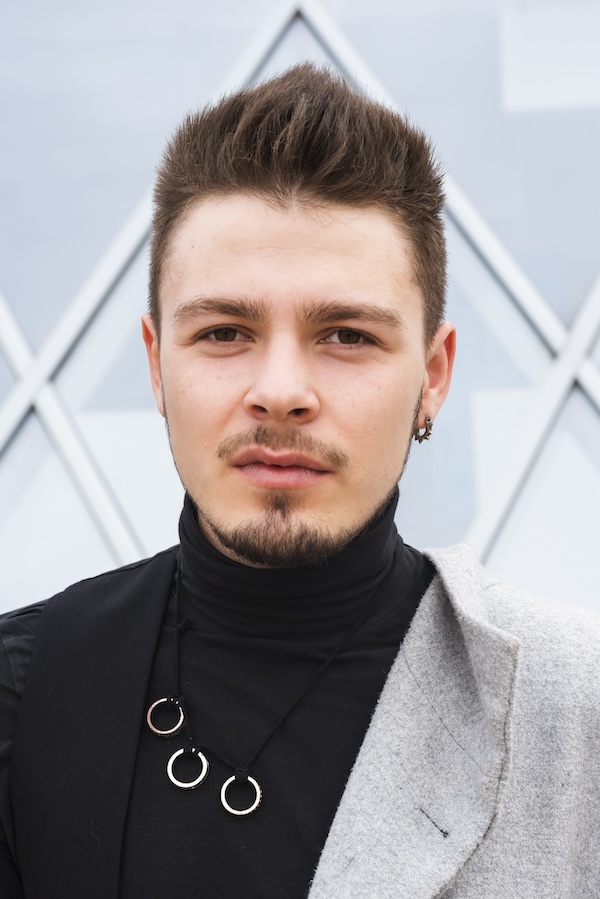
For polished, intentional headshots, keep the environment simple and let the subject’s expression take center stage. A neutral-toned backdrop—grey, white, or black—provides a timeless, distraction-free canvas, while soft, directional lighting brings dimension and depth to the face.
Position your subject with their shoulders angled slightly away from the camera and their head turned back toward the lens. Keep the spine tall and the jaw slightly forward and down to define strong facial lines, then guide one shoulder subtly forward or lower to introduce visual tension and balance. Set the tone with clear, purposeful prompts: ask them to imagine this image as part of a brand, campaign, or personal milestone. Explore a range of subtle emotional tones, from warm and approachable to intense and focused, and let them settle into what feels most natural.
Shoot from the chest or shoulders up, using a shallow depth of field to draw attention to the eyes while creating a soft blur in the background. Work in quiet, deliberate movements, guiding gentle shifts in expression and posture. For best results, use a lens in the 85mm–135mm range to ensure natural facial proportions and flattering compression.
If your subject feels unsure, tether your camera and show them a few select frames mid-session. It not only builds confidence, but helps fine-tune their posture and presence through collaboration.
The Power Stance
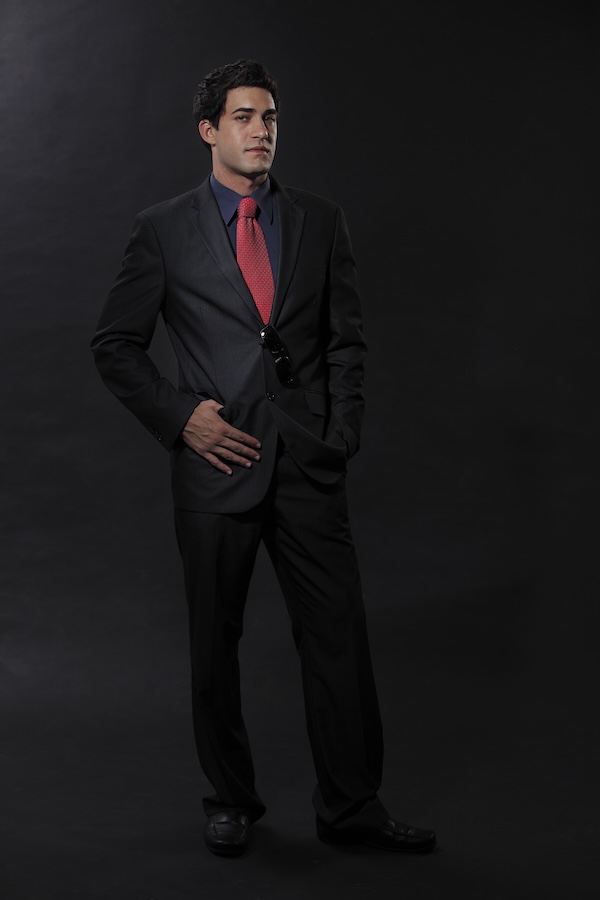
This male pose is all about presence and quiet authority, perfect for editorial portraits, corporate headshots, or personal branding work. Start with a clean, minimal background: a seamless studio wall, plain architectural surface, or even a well-framed window or column can work beautifully. Use directional light from the side or slightly above to carve out strong facial features and create visual depth.
Have your subject stand tall with their feet about shoulder-width apart, shoulders relaxed but firm, and chest open. Hands can go into pockets (with thumbs in or out), or one hand can rest casually on a belt, jacket, or at their side—choose whatever feels most natural to the subject. Encourage them to embody a sense of poised confidence, as if they’re about to walk on stage or deliver a key message. A few deep breaths, steady eye contact, and a calm expression go a long way.
Let them make small adjustments—like a head tilt or shoulder shift—to keep the shot dynamic. Capture a range of angles, from tight upper-body frames to full-body shots taken slightly from below to enhance stature. Structured clothing such as blazers or layered outfits elevate the overall look, adding polish while helping maintain clean lines. The goal is presence without stiffness—strength that feels natural, composed, and entirely self-assured.
Over-the-Shoulder Glance
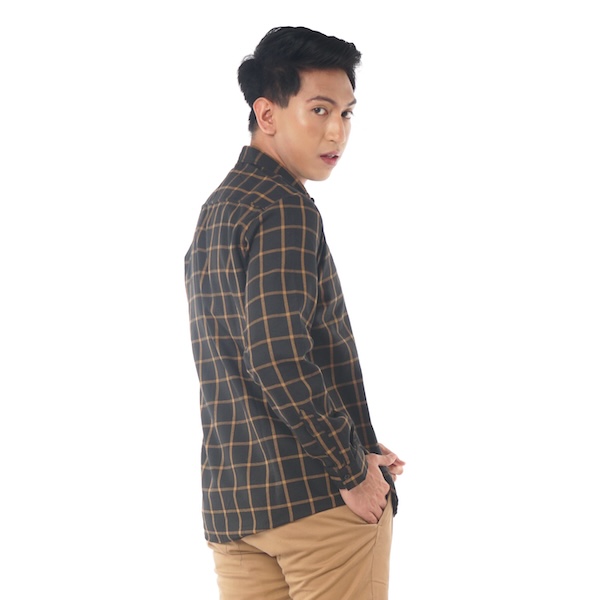
Ideal for environmental portraits or editorial work, this male pose offers a hint of mystery and style. Position your subject with their back turned partially toward the camera, then ask them to look over their shoulder. A clean white background or textured wall helps keep attention on the expression and lines of the face. Shoulders should stay relaxed, with the spine upright and one foot slightly back for balance.
Ask your subject to shift their weight naturally and imagine someone just called their name—this adds subtle authenticity to the glance. It’s a powerful way to show jawline and eye connection without needing a full face-forward stance. Try shooting slightly above shoulder level to elongate the neck and frame the expression.
Leaning Forward Seated Pose
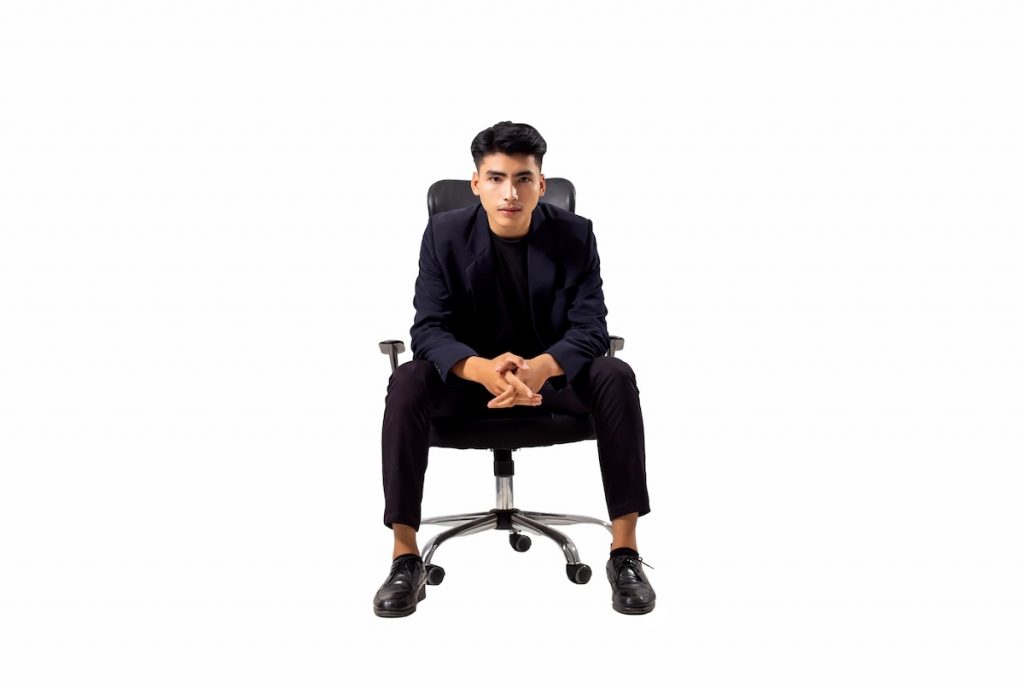
This grounded male pose works especially well for introspective or thoughtful shots. Have your subject sit on a chair, bench, or low stool and lean their upper body forward with elbows resting on their knees. Keep the background clean and muted to direct all attention to the face and hands.
Guide them to clasp their hands loosely or intertwine fingers, letting the pose fall naturally. This slightly hunched posture creates an intimate and powerful frame, perfect for capturing softer expressions or moments of focus. Vary the eye direction from straight down to slightly up at the lens to build variety with minimal repositioning.
Jacket Toss Over Shoulder
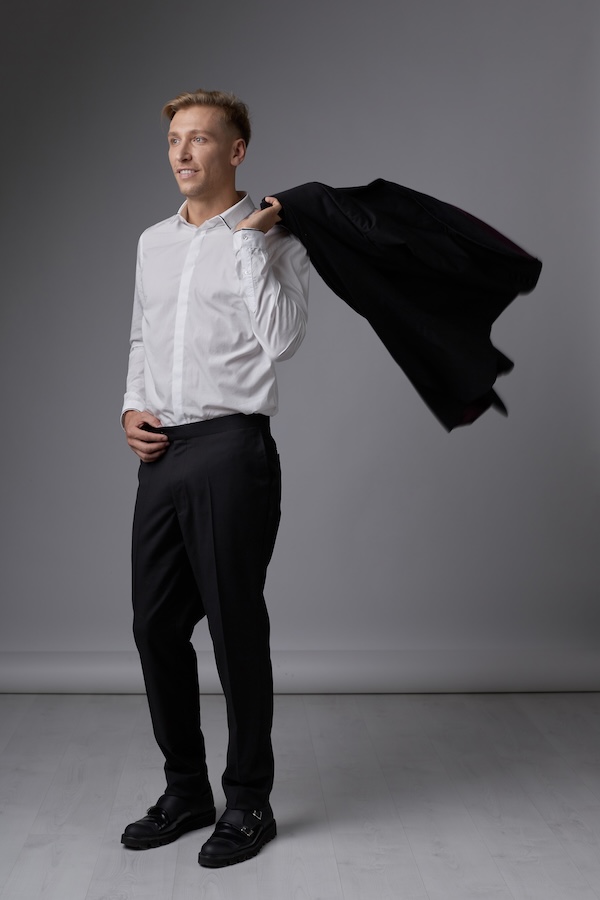
This classic male model pose instantly adds movement and polish. Have your subject hold a jacket or coat slung casually over one shoulder, either walking or standing still. Use natural light or a simple directional flash setup to emphasize clean lines and wardrobe texture. Ask them to grip the jacket with one hand while the other rests in a pocket or swings freely.
The posture should remain tall and open, with a gentle bend in one leg to avoid stiffness. Prompt them to “walk like they just wrapped up something successful”—that effortless energy translates beautifully on camera. Shoot at mid-body or full-body level to highlight the motion of the fabric.
The Half-Turn Power Stance
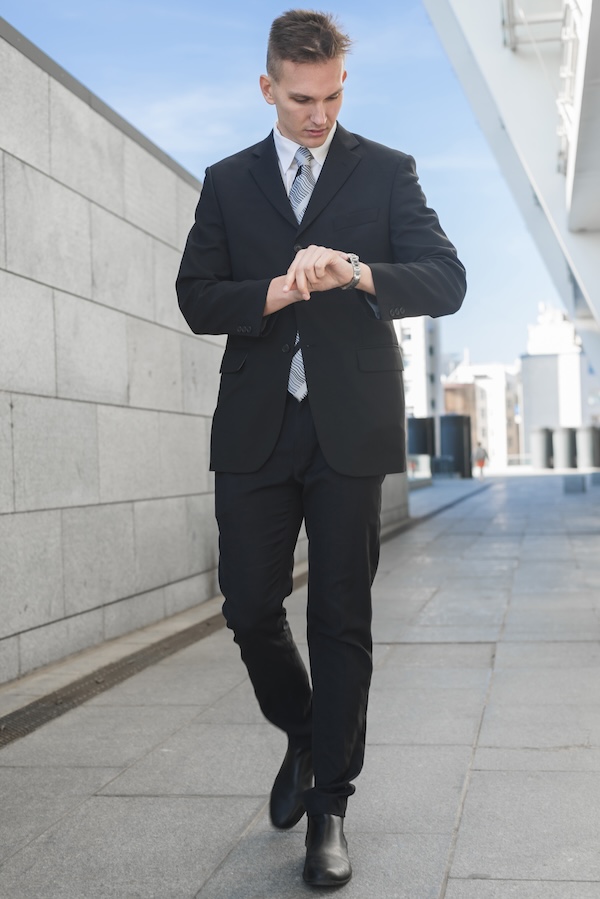
Position your subject mid-step or mid-shift—half-turned toward the camera with one foot planted and the other just beginning to move. This works best with strong directional light that defines shadows on the face and clothing. Use a clean urban backdrop or minimal studio wall. Their hands can rest at their sides, in pockets, or gently adjusting a watch or cuff.
This transitional body language conveys calm readiness, as if they’re about to engage but are momentarily paused. It’s especially flattering for fitted jackets or tailored outfits and captures subtle confidence with a sense of movement.
Elbow Rest on Surface
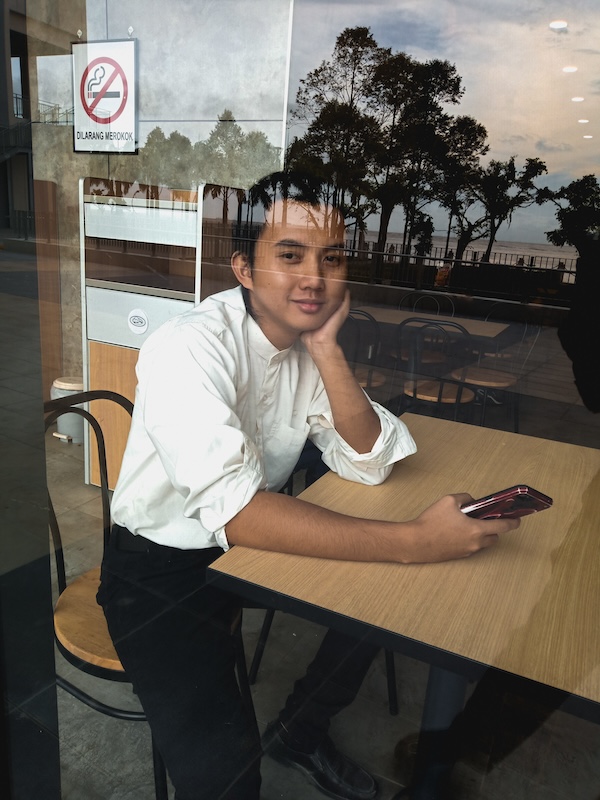
Use a table, bar, or railing where your subject can lean and rest one elbow while supporting their chin or jaw lightly with their hand. This male photoshoot pose creates a quiet, contemplative frame that’s perfect for character-driven portraits. Choose window light or a controlled studio setup to enhance facial details and textures.
Encourage relaxed fingers and a soft jaw, since nothing should feel clenched. Keep the other hand loose in the lap or resting on the surface. Shoot close-up or three-quarters to focus on the interplay of posture and expression, especially useful for subjects who are naturally expressive with their eyes.
Crossed Leg Lounge
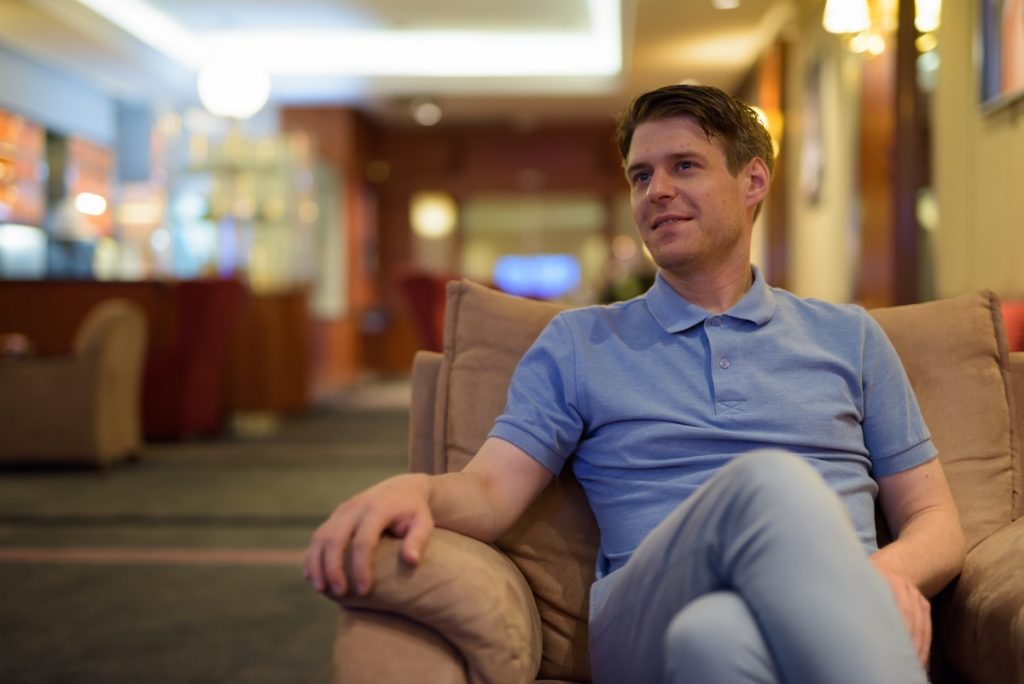
For editorial or creative lifestyle sessions, seat your subject low on a stool, step, or floor, with one leg crossed casually over the other at the ankle. Keep the arms relaxed, perhaps resting on the knee or clasped in the lap. The torso can lean slightly back or to one side. Choose natural light or soft-box fill to avoid harsh contrasts.
This male model pose gives off a creative vibe and works well when paired with textured layers, such as chunky sweaters, leather jackets, or rolled-up sleeves. Guide them to “sink into the seat” for a more lived-in look, and capture both profile and front-facing variations.
Hands Clasped Behind Back

Standing tall with hands clasped loosely behind the back immediately lends a composed air. This is a great choice for subjects who want to appear thoughtful or reserved without seeming closed off. Use a classic backdrop, such as a white wall, trees, or a muted texture, to keep attention on the posture. The pose encourages a slight lift in the chest and a subtle forward tilt of the chin, which accentuates formality without feeling uptight. Shoot from eye level or slightly below to add gravity and stature, especially when paired with structured clothing or outerwear.
Adjusting Tie or Collar
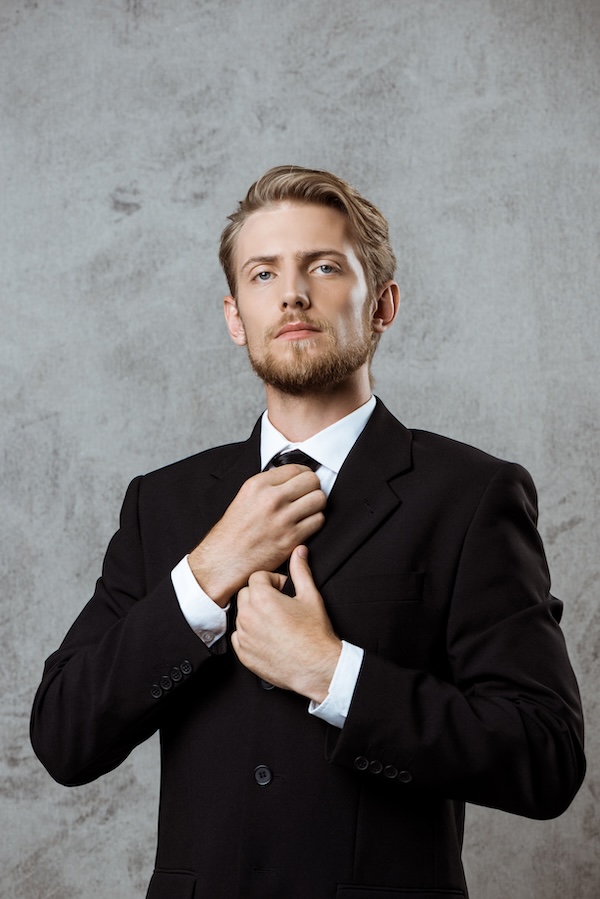
Ask your subject to reach up and adjust their tie, collar, or shirt cuff as if preparing for something important. This motion introduces purpose into the hands and brings focus to the upper body. Keep the lighting soft and directional, emphasizing shadows under the jaw and cheekbones.
The gesture should be mid-action—not fully adjusted—which makes the moment feel candid. Combine this with a steady gaze, either toward the camera or slightly down, to evoke a cinematic sense of preparation or quiet determination.
Floor Sit With One Knee Up
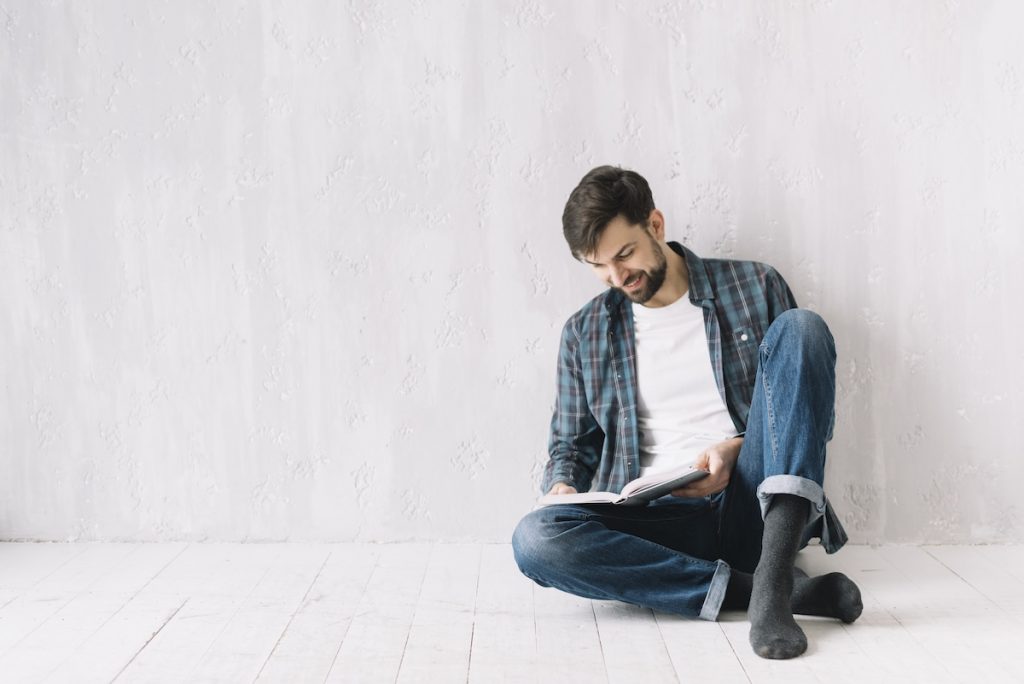
This grounded, introspective male pose is ideal for more creative or moody shoots. Seat the subject on the floor, preferably in front of a blank wall or textured backdrop. Have one leg bent with the knee up and the other tucked beneath. The arms can rest casually on the raised knee or dangle at the sides. This lower angle adds intimacy and works well with natural window light or a softbox to one side. Ask the subject to lean slightly forward or rest their head gently on a hand for a sense of vulnerability or thoughtfulness. Shoot wide for context or tightly cropped for drama.
Arm Cross Lean
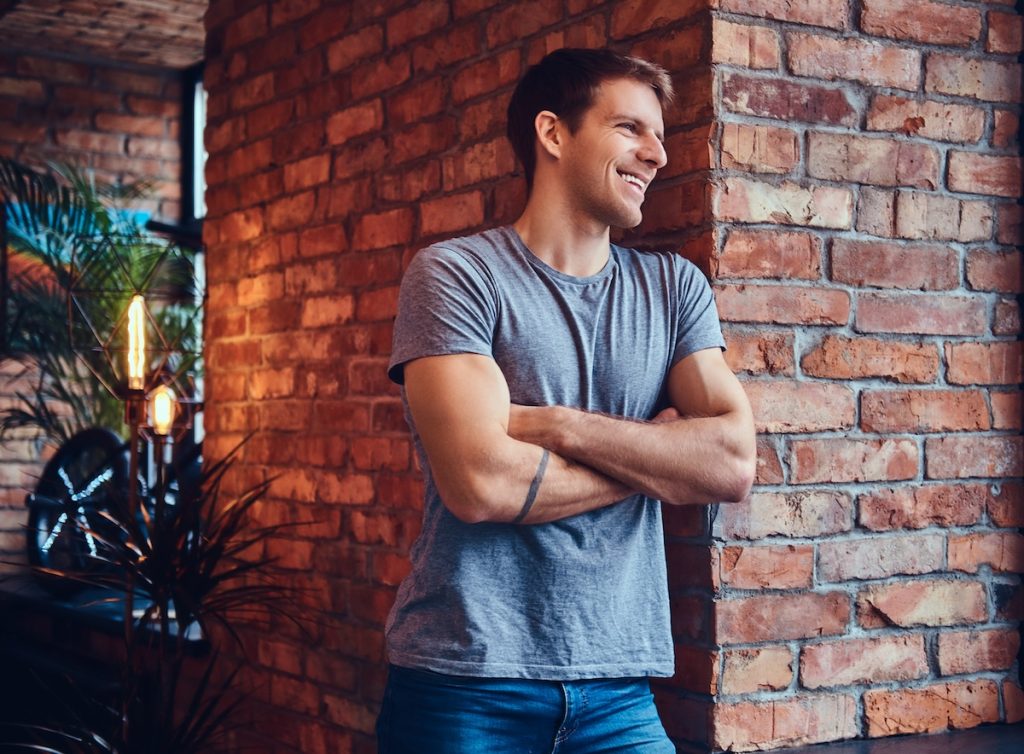
This assertive yet casual male pose works well with textured walls, fences, or columns as a backdrop. Ask your subject to cross their arms loosely and lean their shoulder into the wall. Make sure the weight stays evenly distributed so the posture feels controlled, not slouched. A subtle head tilt and steady eye contact help convey confidence without overdoing it. It’s a great male photoshoot pose for highlighting jawline and posture, especially when paired with a layered outfit or outerwear that adds visual structure.
Hands Folded in Front
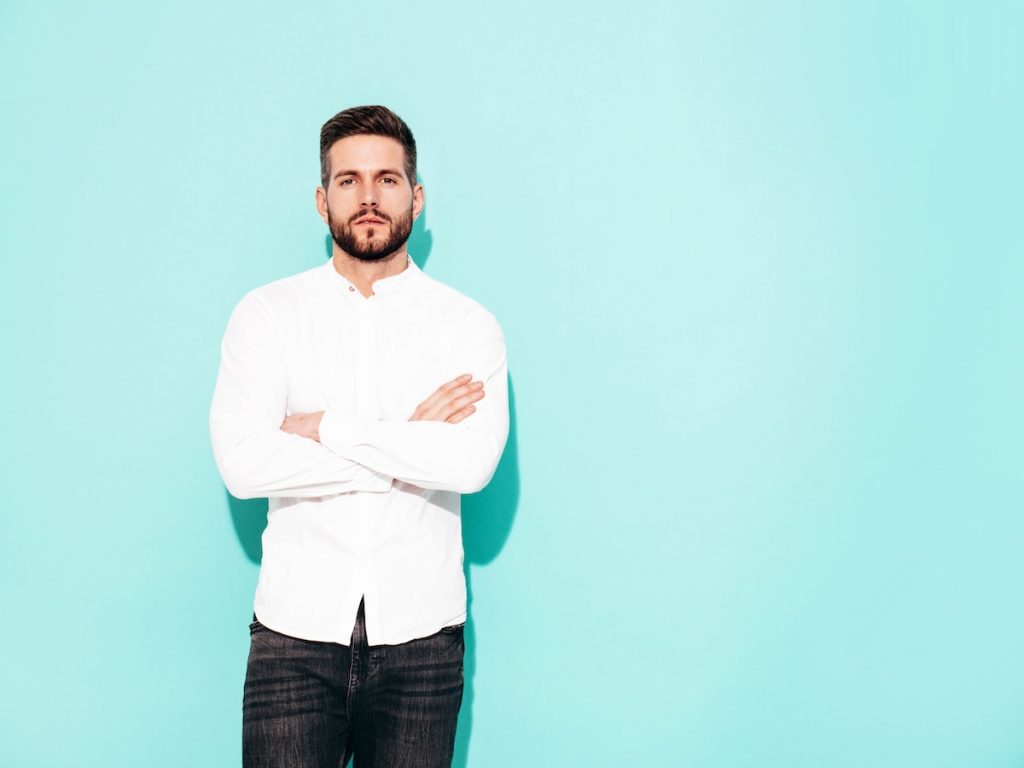
Have your subject stand tall with both hands folded loosely in front of the body, either clasped at around waist level or one hand gripping the opposite wrist. This posture projects quiet confidence and works well in both formal and lifestyle shoots. A clean background, like an industrial wall or muted outdoor space, gives the pose room to breathe. Use soft lighting and a centered composition to emphasize symmetry and presence. Encourage the subject to shift their weight slightly from side to side between shots for natural variations.
Standing Against Light Source
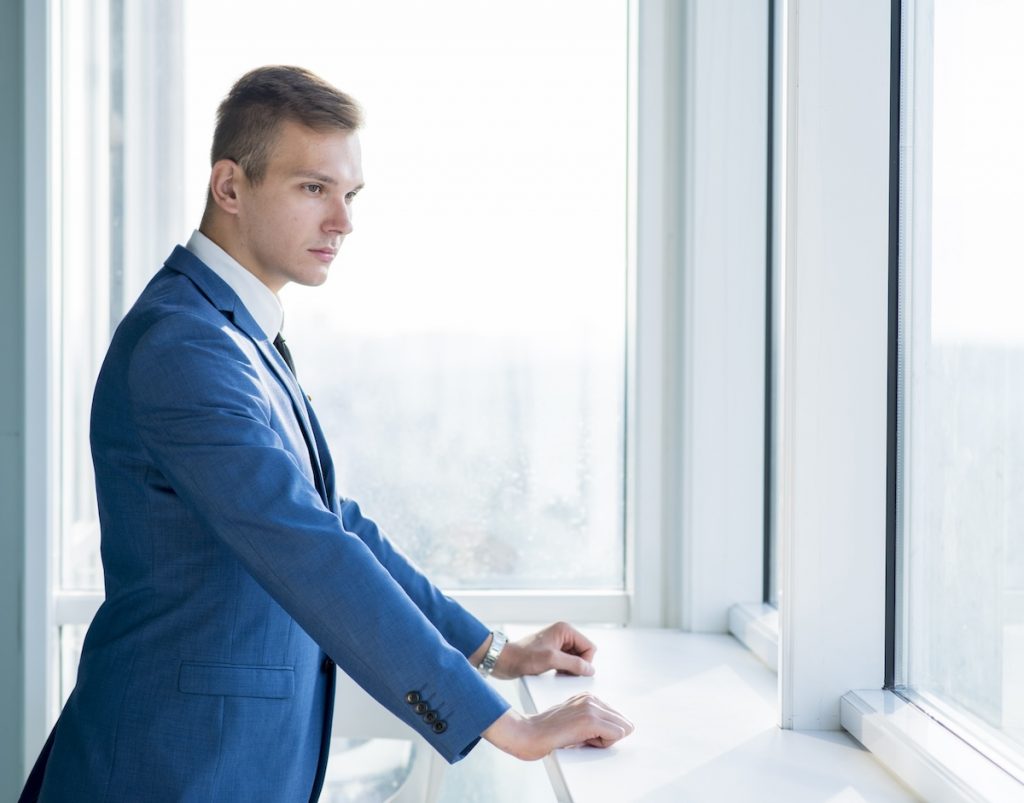
Position your subject directly in front of a large window or backlight, with their face turned just enough to catch soft side lighting. This creates a subtle silhouette or rim-light effect, perfect for a dramatic editorial shot. Ask them to close their eyes for a moment, then slowly open and look toward the light—this prompts genuine expressions and quiet intensity. Keep the hands loose by the sides or lightly resting on pockets, and use a slightly underexposed setting to bring out mood and contrast.
Arm on Raised Knee (Seated)
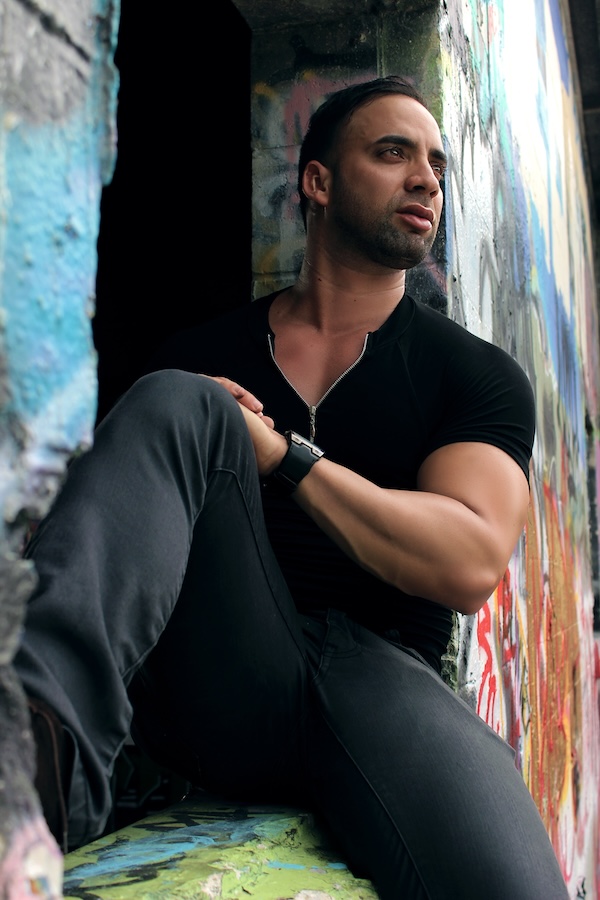
Have your subject sit on a bench or step with one foot flat and the other leg bent so they can rest an arm casually across the raised knee. This diagonal posture adds visual movement and is perfect for storytelling portraits. Shoot slightly from the side to capture depth and use natural window or diffused outdoor light for a cinematic touch. Direct their gaze off-camera and prompt them to take a slow breath, adding stillness and introspection to the frame.
Jacket Grip and Shift
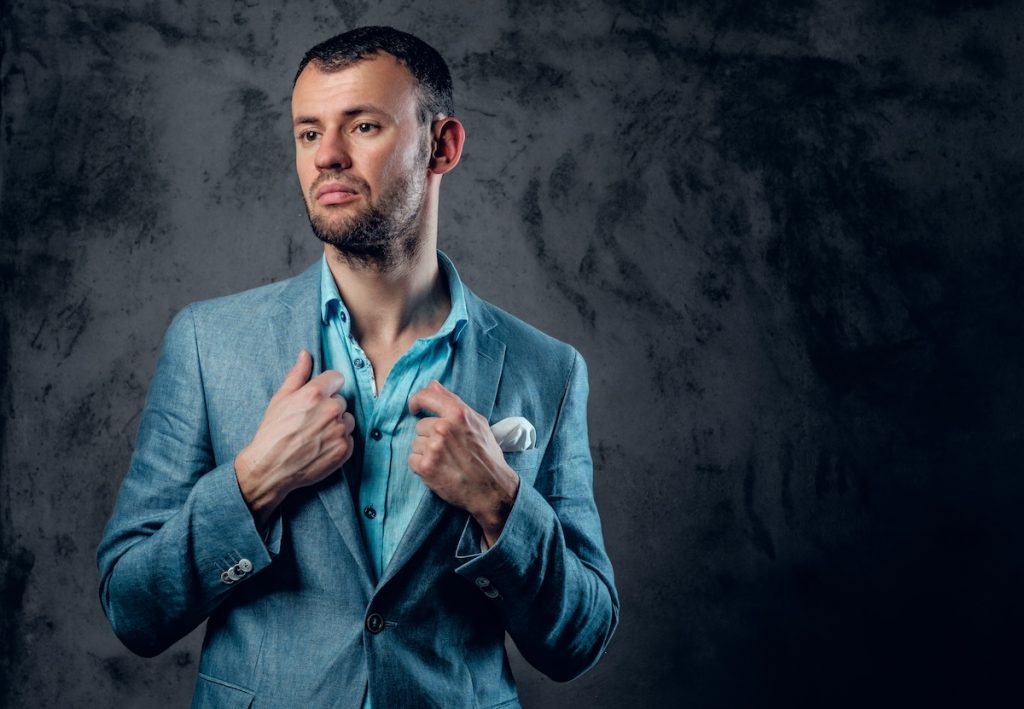
Ask your subject to grip the lapel of their jacket or coat with one hand and gently pull it as if adjusting the fit. Keep the other hand relaxed, perhaps resting in a pocket or hanging freely. This adds a sense of movement while keeping the frame clean and composed. Use a plain background or something slightly textured, and frame from the waist up. A slight lean or head turn can dramatically shift the mood of the image without requiring a full reposition.
Candid Laugh While Turning Away
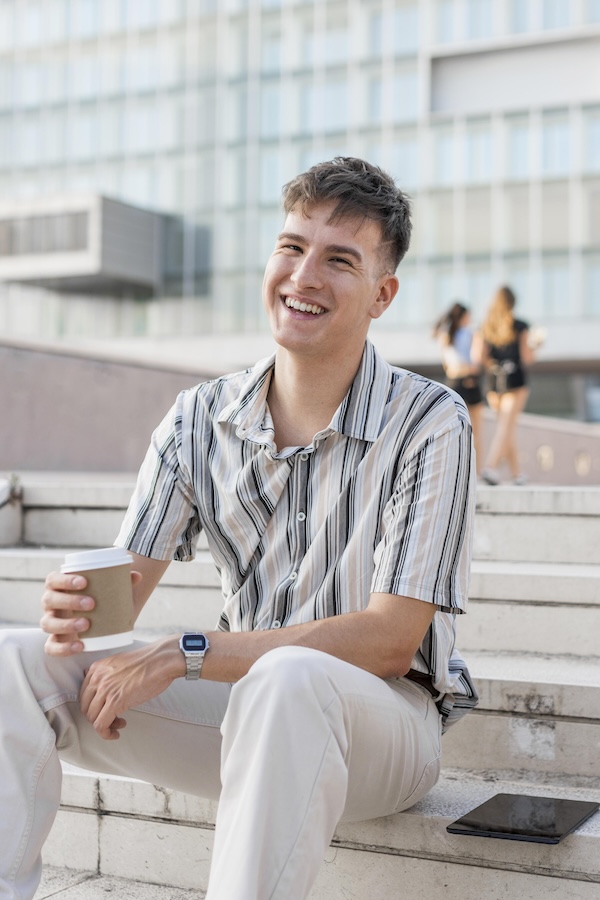
A great option to capture spontaneity and warmth, this male pose involves your subject mid-turn while naturally laughing or smiling. Ask them to glance over their shoulder, then give a cue that prompts a genuine reaction, like a quick joke or compliment. Use soft side light to highlight facial features and isolate them against a simple, slightly blurred background. Shoot in burst mode to capture the expression right as it unfolds.
One Hand in Jacket, One Hanging
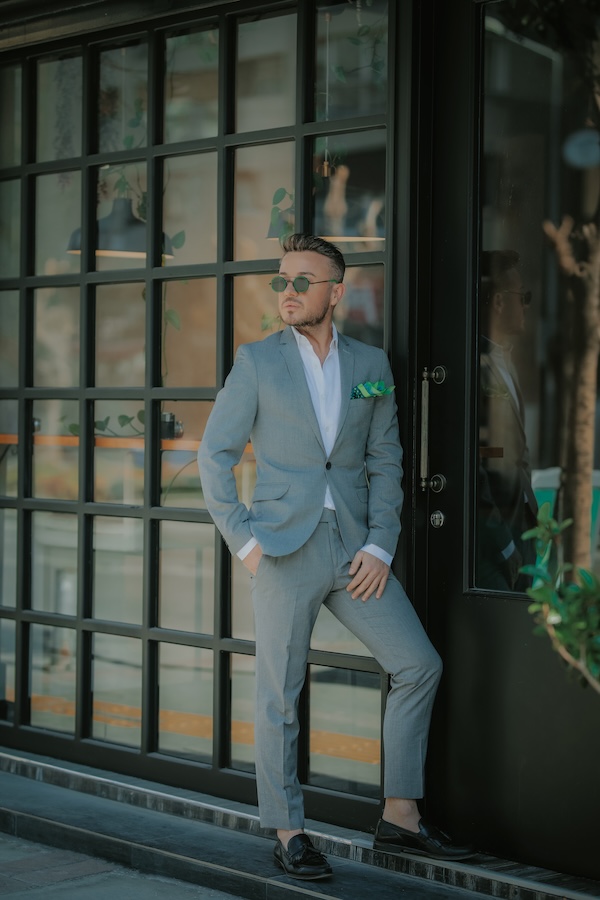
This asymmetrical stance works beautifully for subjects wearing layered outfits like blazers or coats. Have one hand tuck into the jacket or pocket, while the other hangs naturally at the side. Their shoulders should remain open and squared to the camera. Use shallow depth of field to pull focus to the face and play with expressions, from soft smirks to steady gazes, to create variation.
Forearm Across Counter
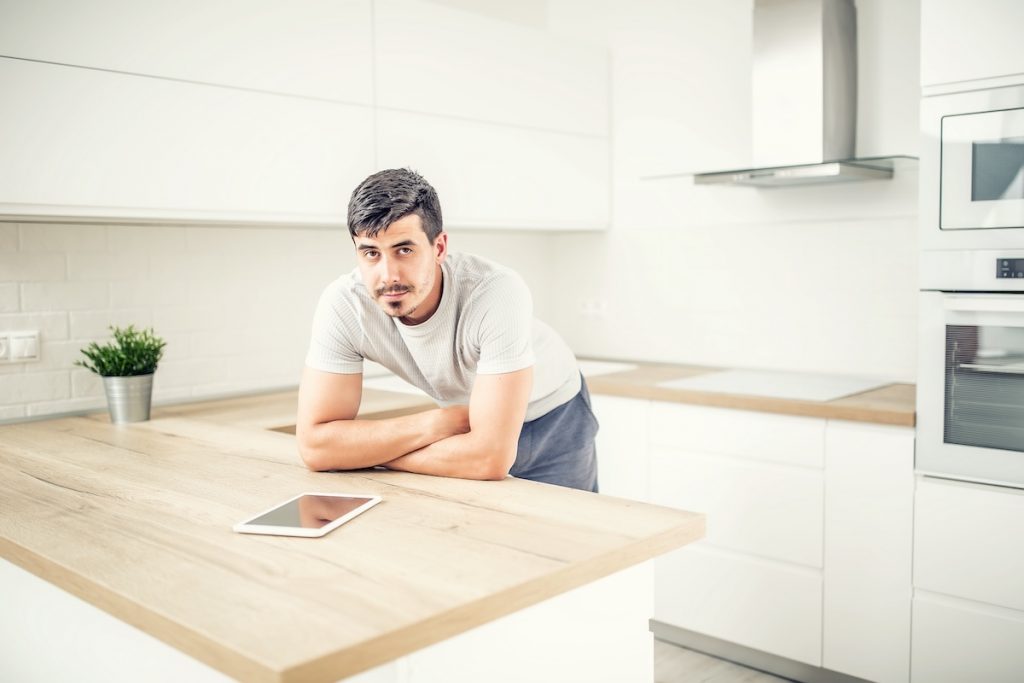
For an assertive yet approachable portrait, position your subject next to a counter or wall, and have them rest a forearm horizontally across it. This naturally leans their torso forward and opens up flattering angles in the upper body. Ask for soft eye contact or a downward glance to convey thoughtfulness. Use directional light to sculpt shadows along the arms and neck, giving the image extra shape and depth.
Interacting With Props
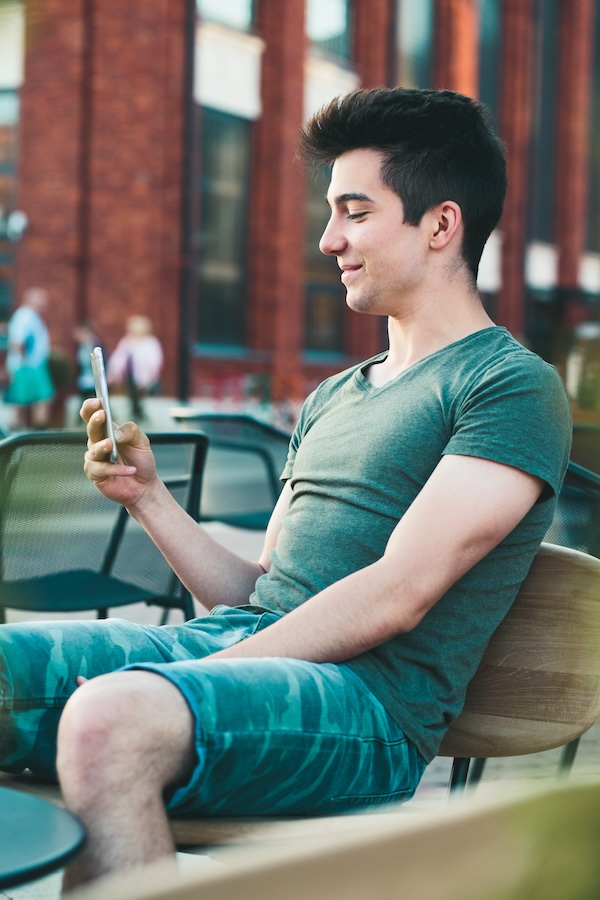
Props used naturally can elevate a portrait. Ask your subject to check a phone, flip through a notebook, or hold a pair of sunglasses mid-action. These tasks relax the hands and body posture and add narrative elements to the portrait. This style is perfect for branding or editorial shoots.
Standing in Profile With Chin Up
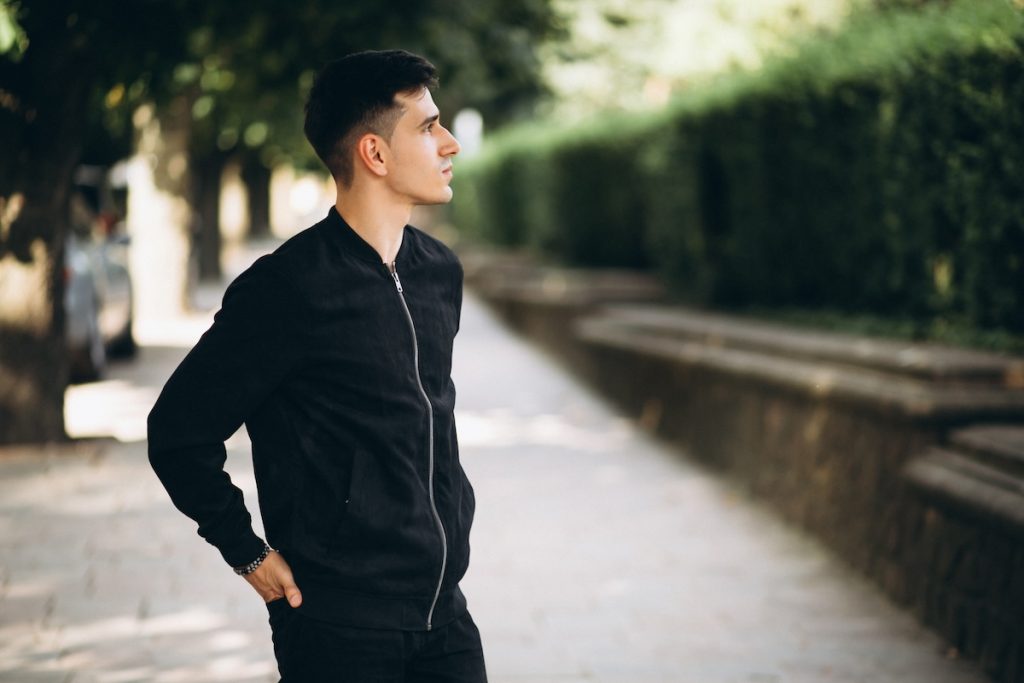
Have your subject turn sideways to the camera with their body in profile and chin slightly lifted. This elongates the neck and emphasizes facial structure, particularly strong jawlines. Keep hands relaxed or loosely behind the back. Use natural or studio light from the front-side angle to highlight the contours of the face and shoulders. This male pose reads calm and statuesque, and works well in both close-up and full-body formats.
Squat or Low Sit Pose
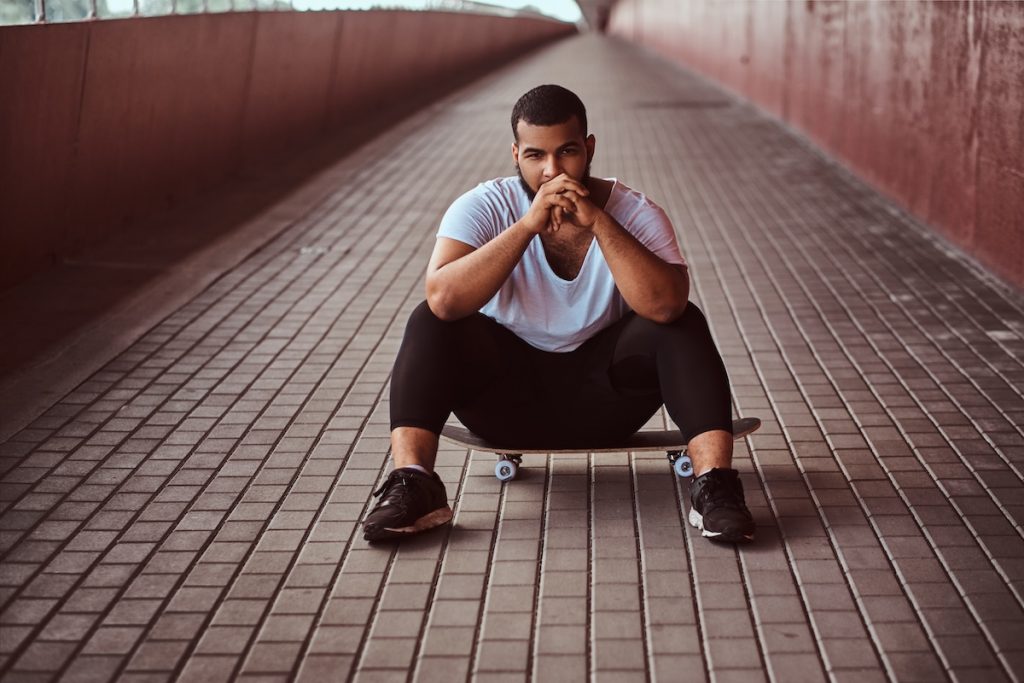
Set your subject in a low squat or seated on their heels—great for outdoor, rugged, or urban settings. Ask them to place elbows on knees or loosely clasp hands in front. This grounded male model pose conveys strength and control, especially in casual or streetwear contexts. Shoot from a low angle with a wide lens to exaggerate presence and create tension between subject and space.
Hands Adjusting Hair

Guide your subject to run a hand through their hair or stroke their facial hair. These simple motions engage the upper body and head naturally, and the hands serve as visual anchors near the face. Capture mid-motion or as the movement finishes—both versions add a sense of fluidity to the frame. Keep lighting soft and close to avoid harsh shadows around the eyes.
Standing One-Step-Up
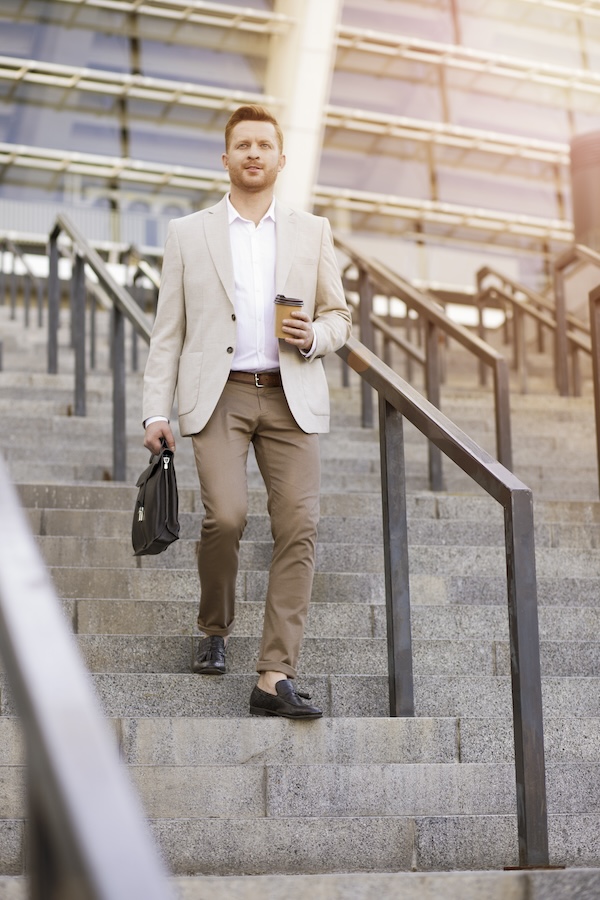
Place your subject on a stair or step slightly above your camera level. Ask them to stand tall with one foot higher, creating natural asymmetry and dynamic leg lines. Pair with soft or golden-hour light, and have them look off-camera or downward for a reflective vibe. It’s a confident pose that conveys motion and control without needing accessories or added movement.
Hands in Coat Pockets with Open Collar
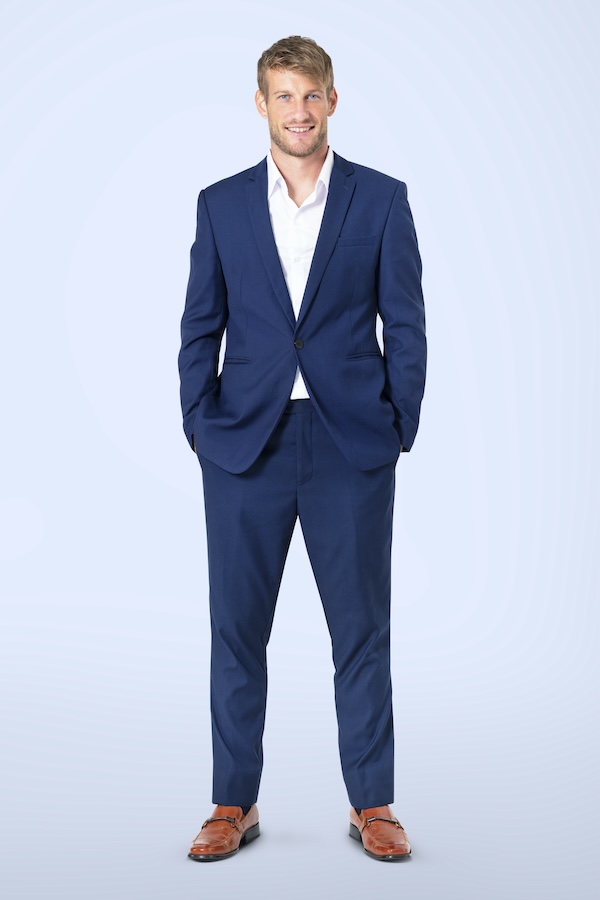
This styling-forward male model pose focuses on fashion and easy confidence. With the collar open and the coat either worn or draped, the hands go into the side or front pockets to keep posture tall and controlled. Use a clean background or open sky for a modern, editorial look. Adjust head angle slightly with each frame to find the best light on the cheekbones and jawline.
Elbows on Table, Leaned in
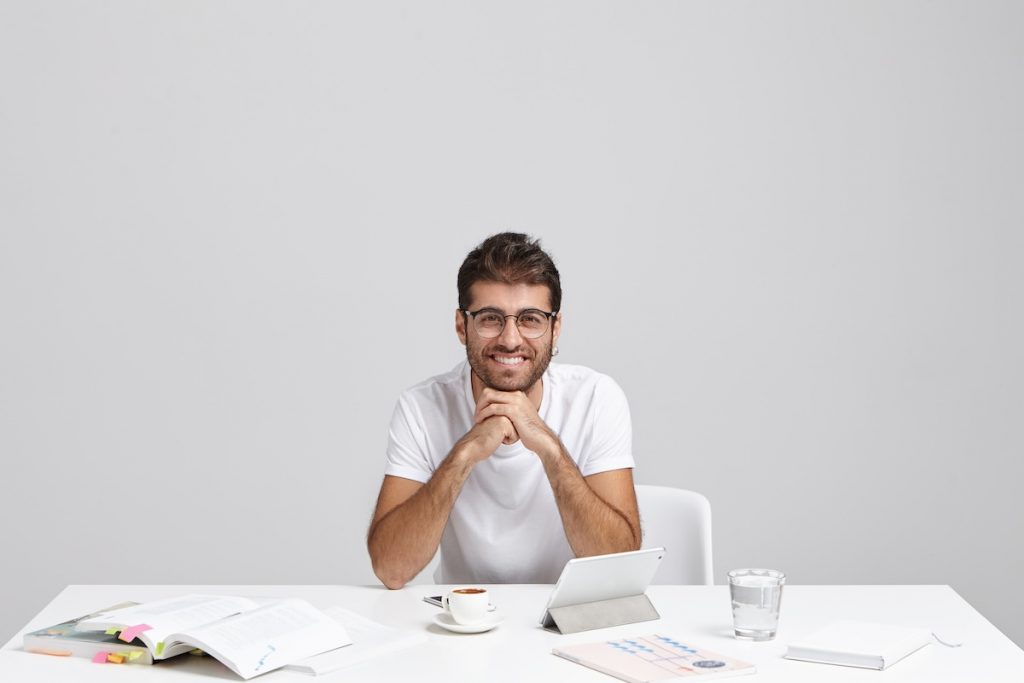
In a close-up or half-body shot, have your subject sit at a table or desk and lean forward with both elbows resting on the surface. The hands can cradle the jaw or fold together. This draws the viewer closer and makes the subject feel present and expressive. Ideal for low-light moody portraits or creative headshots.
Crossed Arms Behind Back

A quiet power pose, this works especially well when photographed from the front or slightly to the side. Ask your subject to clasp both arms behind their back, keeping the shoulders open and spine tall. Their face becomes the main focus, so use soft lighting and catchlight in the eyes to maintain connection. Works best with formal or uniform-style clothing.
Against the Car or Wall, One Knee Bent
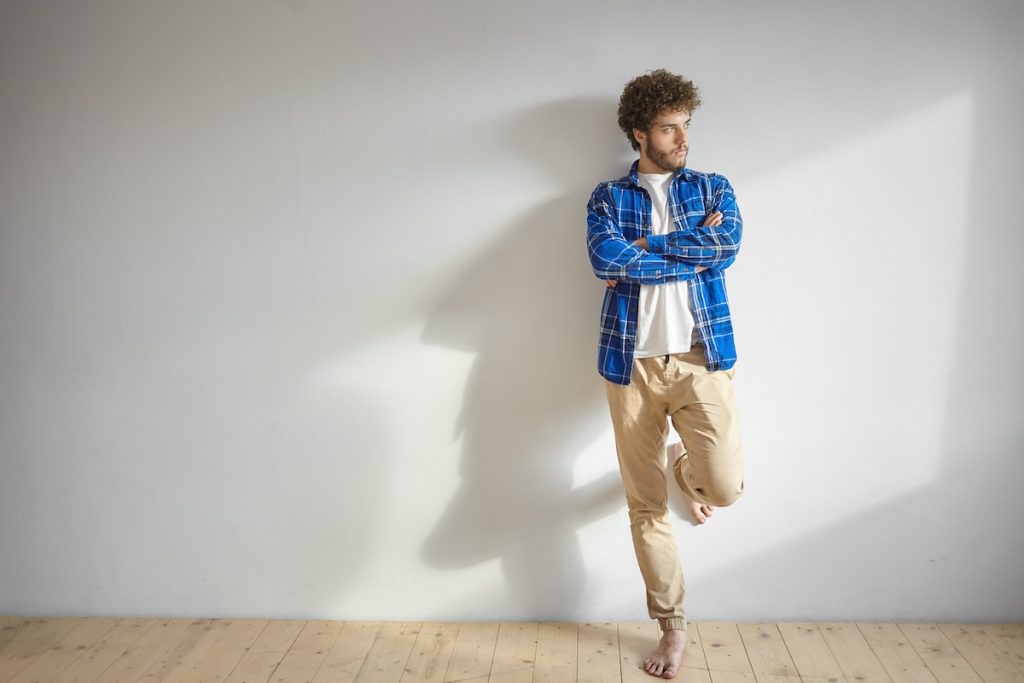
Have the subject lean back against a car, railing, or wall with one foot propped against the surface and the other planted. This creates triangle shapes in the limbs and adds dynamism to the pose. Hands can stay relaxed or hold a prop like sunglasses. Suggest a laid-back energy—like they’re just waiting with time to spare—and shoot both wide and close to experiment with the framing.
Walking Away with Over-the-Shoulder Look
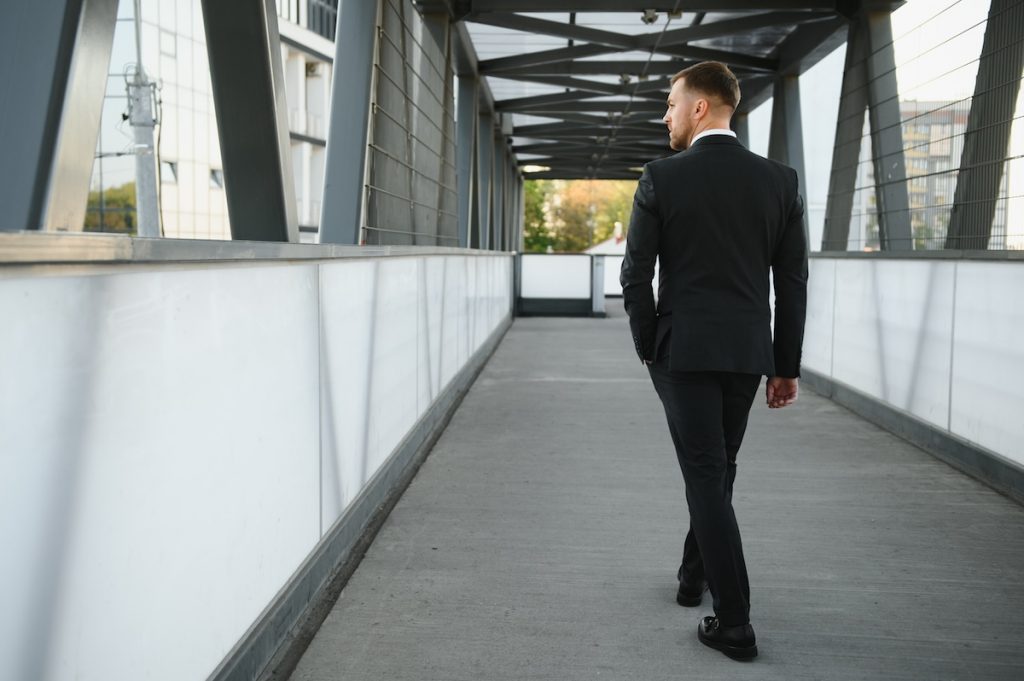
Set the subject on a path, sidewalk, or studio floor and have them walk away from the camera at a natural pace. Just before taking a step, cue them to glance over one shoulder with a calm or playful expression. Keep their posture tall and arms relaxed at their sides. This pose suggests quiet confidence and curiosity. Use shallow depth of field to soften the background and focus attention on the glance.
Leaning Forward with Hands on Knees (Seated)
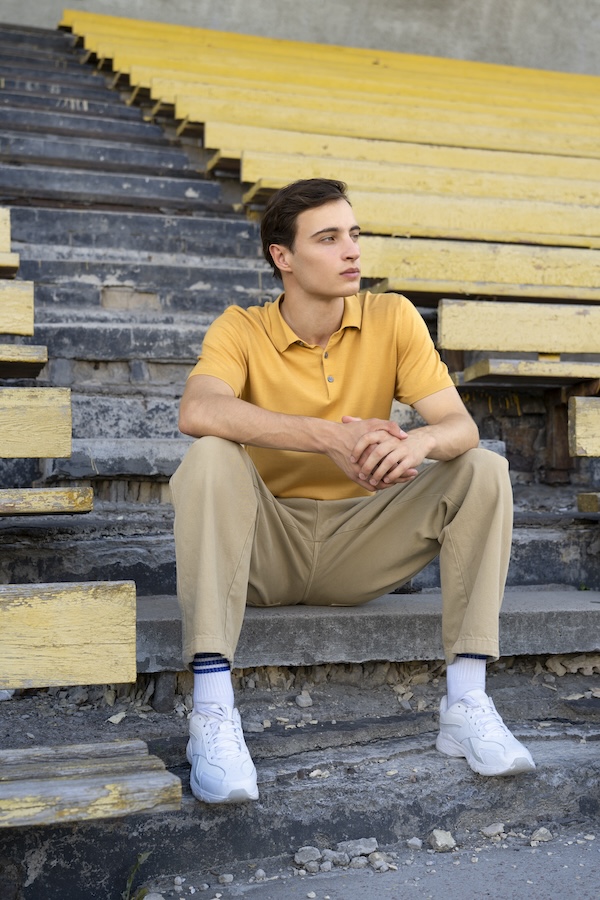
Have your subject sit on a low bench or chair and lean forward slightly with both hands resting on their knees. This brings the upper body into the foreground and draws attention to the face. The posture is strong yet grounded, ideal for intimate or conversational portraits. Use soft, directional lighting from the side to add depth to facial features, and prompt subtle head turns or shifts in eye direction for variety.
Standing in Doorframe or Between Columns
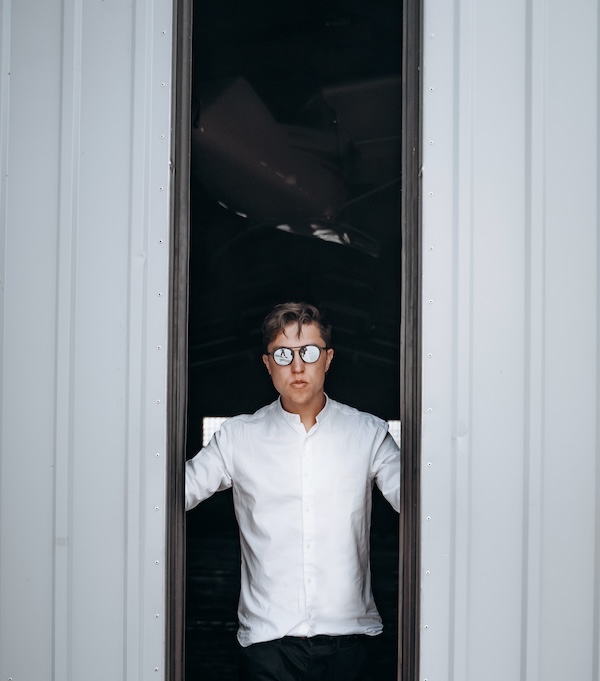
Frame the subject within an architectural feature like a doorway, arch, or between vertical columns. Have them place one hand lightly on the feature while standing centered or slightly off-center. This setup creates a natural visual frame that emphasizes posture and presence. Shoot with depth and soft light to add dimension and narrative.
Sitting Cross-legged on the Ground
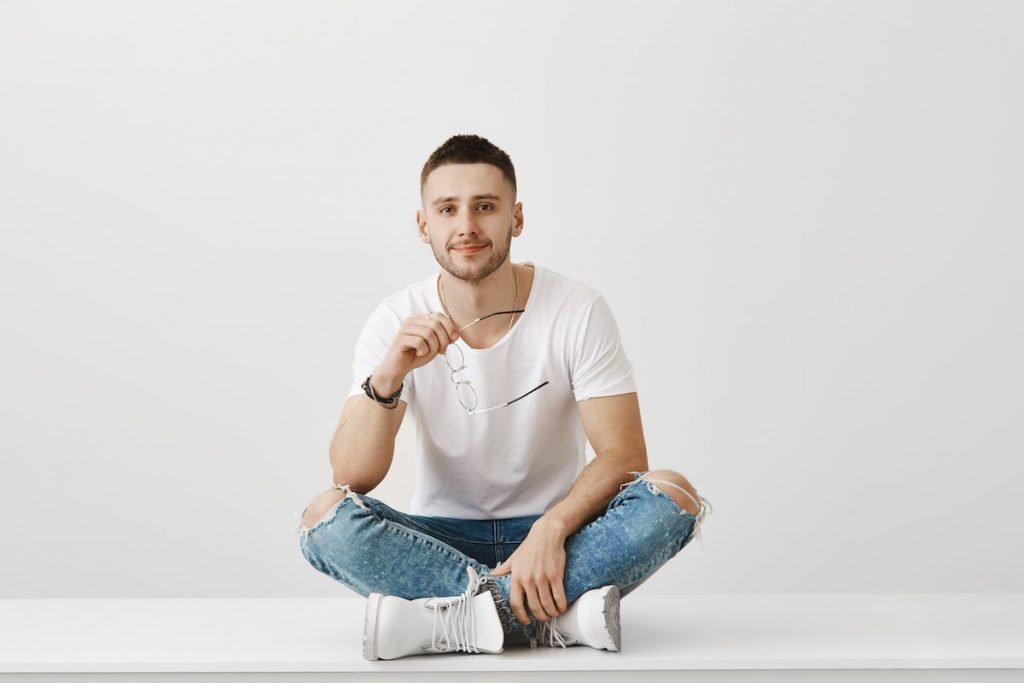
This casual, introspective male pose works well in natural settings like parks, rooftops, or even clean indoor spaces. Ask your subject to sit cross-legged with an upright spine and their hands resting loosely on their legs or ankles. Encourage them to look down, off to the side, or directly into the lens depending on the tone. It’s a great option for lifestyle shoots, conveying grounded energy and calmness. Use overhead or side lighting for a natural, airy feel.
Common Mistakes to Avoid When Posing Males
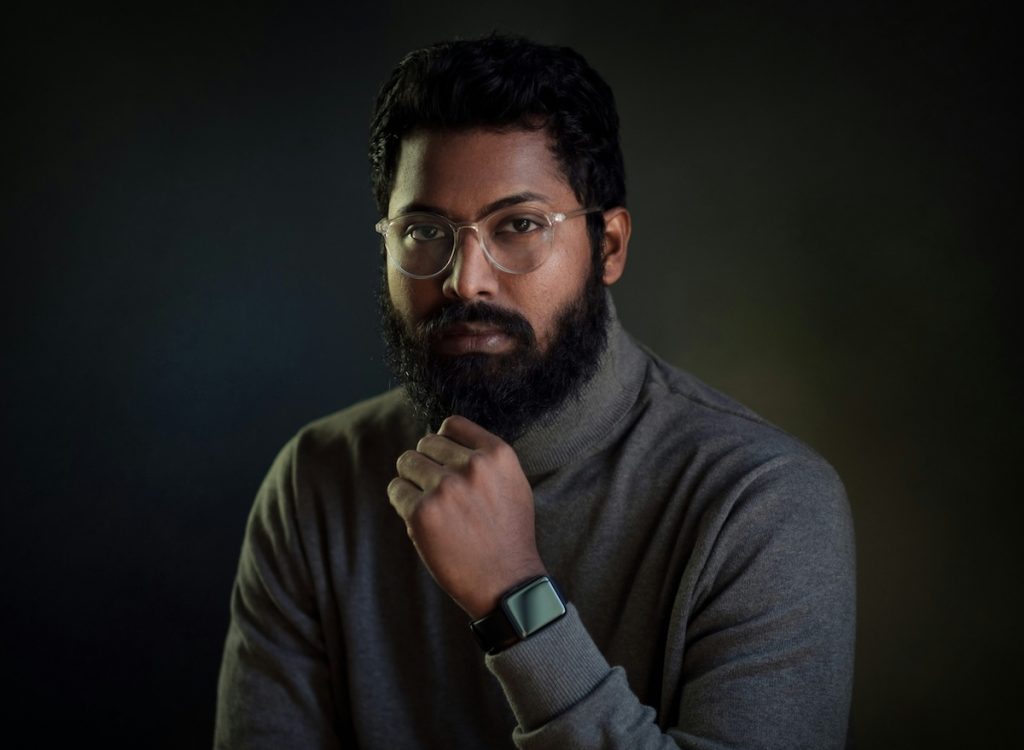
Even with the right lighting, location, and wardrobe, awkward male poses can quickly derail the impact of your shots. Posing male subjects—especially those who aren’t professional models—requires intentional direction, subtle adjustments, and a solid understanding of what not to do. Here are some of the most common pitfalls photographers face, and how to steer clear of them.
Overposing or Overdirecting
Too many instructions at once can overwhelm your subject and make them look stiff or robotic. Avoid micro-managing every limb or expression. Instead, give simple, natural prompts and build the pose gradually. Let the subject settle into the moment with small, confident movements.
Ignoring Posture
Slouching is one of the fastest ways to drain power from a male pose. Watch for rounded shoulders, inward-leaning necks, or collapsed chests, especially when seated. Remind your subject to stand tall, lift their chest slightly, and elongate the neck. Strong posture instantly elevates the frame and communicates confidence.
Awkward Hand Placement
Male hands can be tricky. Too loose, and they look lifeless; too tense, and they become distracting. Avoid the “dangling arms” look or the dreaded “claw hands.” Give your subject something to do: place one hand in a pocket, adjust a jacket, hold a prop, or cross the arms naturally. Always keep fingers relaxed and intentional.
Lack of Variation
Using the same straight-on, arms-crossed pose for every male client can lead to repetitive and uninspired portraits. Change angles, experiment with walking shots, seated setups, and close crops. Even subtle variations in shoulder angle, gaze, or hand placement can make each frame feel fresh and unique.
Forcing Expressions
Telling your subject to “smile more” or “look intense” without context often results in forced or unnatural expressions. Instead, create a relaxed environment and use prompts that encourage genuine emotion, like asking them to think of a recent win or imagine a conversation with someone they admire. Real expression always reads better than performed emotion.
Overlooking the Outfit
Certain male poses don’t suit all outfits. A tight pose might wrinkle a formal shirt or pull awkwardly on a structured jacket. Always consider how clothing behaves when your subject moves and adjust the pose if it starts to look uncomfortable or untidy. A confident pose should enhance the outfit, not work against it.
Forgetting the Subject’s Personality
Not every man wants to look like a fashion ad or corporate executive. Some want a softer, more artistic vibe; others may prefer a candid, casual feel. Avoid imposing a one-size-fits-all approach and instead tailor your poses to fit the subject’s personality, comfort level, and the purpose of the shoot.
Avoiding these common mistakes helps you build trust, create stronger images, and ensure that every male subject leaves the shoot feeling confident and seen. The difference is often in the details and knowing what not to do is just as important as knowing what works.
Share Your Portraits in Seconds
With Honcho, you can deliver portraits to your subjects instantly, seconds after you take the shot—by uploading from camera to cloud. It’s fast, effortless, and designed to make your workflow smarter and your clients happier.
Imagine you’re running a mobile portrait studio at a public event, like a job fair, roadshow, or expo. You’re capturing great portraits, but you don’t have the participants’ contact details for sharing the photos. Instead of manually collecting emails or chasing down people after the event, Honcho takes care of it for you. Each photo is uploaded straight from your camera to the cloud, available instantly in an online gallery.
Participants simply upload a selfie to find their photos using face recognition. They can view, download, and even choose their favorite shots for editing on the spot. This means less back-and-forth after the event, higher engagement, and happier clients.
And there’s more:
- Boost the experience with live slideshows that showcase the photos as they’re being taken.
- Offer on-the-spot wireless printing for instant keepsakes.
- Increase your revenue by offering upsell-ready features, without extra work.
Honcho isn’t just a photo-sharing tool, it’s a game-changer for modern photographers. It automates the tedious parts, enhances the photoshoot experience, and helps you deliver the right photos to the right people, instantly.
Work smarter, delight your clients, and share in seconds with Honcho.
Conclusion
Posing male subjects may seem straightforward at first glance, but the best portraits come from a thoughtful blend of direction, observation, and adaptability. From mastering body language and posture to guiding expressions and hand placement, each small detail contributes to the overall impact of the image. Whether you’re working with everyday clients or seasoned models, understanding how to highlight strength, confidence, and personality without forcing it is what separates a decent photo from a memorable one—especially when capturing male poses that feel intentional and unique.
The key is to keep your subject comfortable, your prompts clear, and your eyes tuned to the subtle adjustments that bring a pose to life. Use the male model poses in this guide as a reliable foundation for crafting effective portraits, but don’t be afraid to let your subject move, breathe, and make the pose their own.
At the end of the day, great posing is about collaboration, not control. The more you guide with intention and flexibility, the more natural, powerful, and authentic your male portraits will become.

